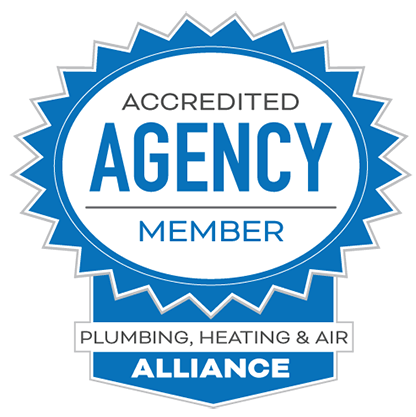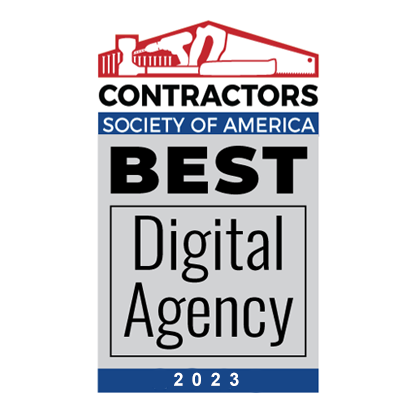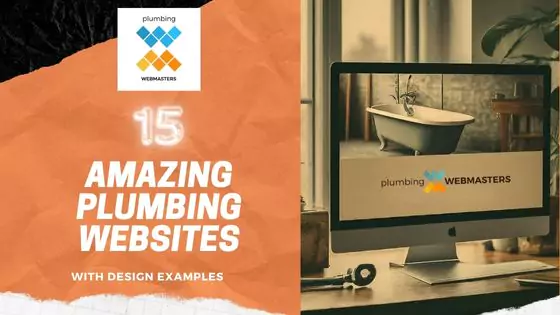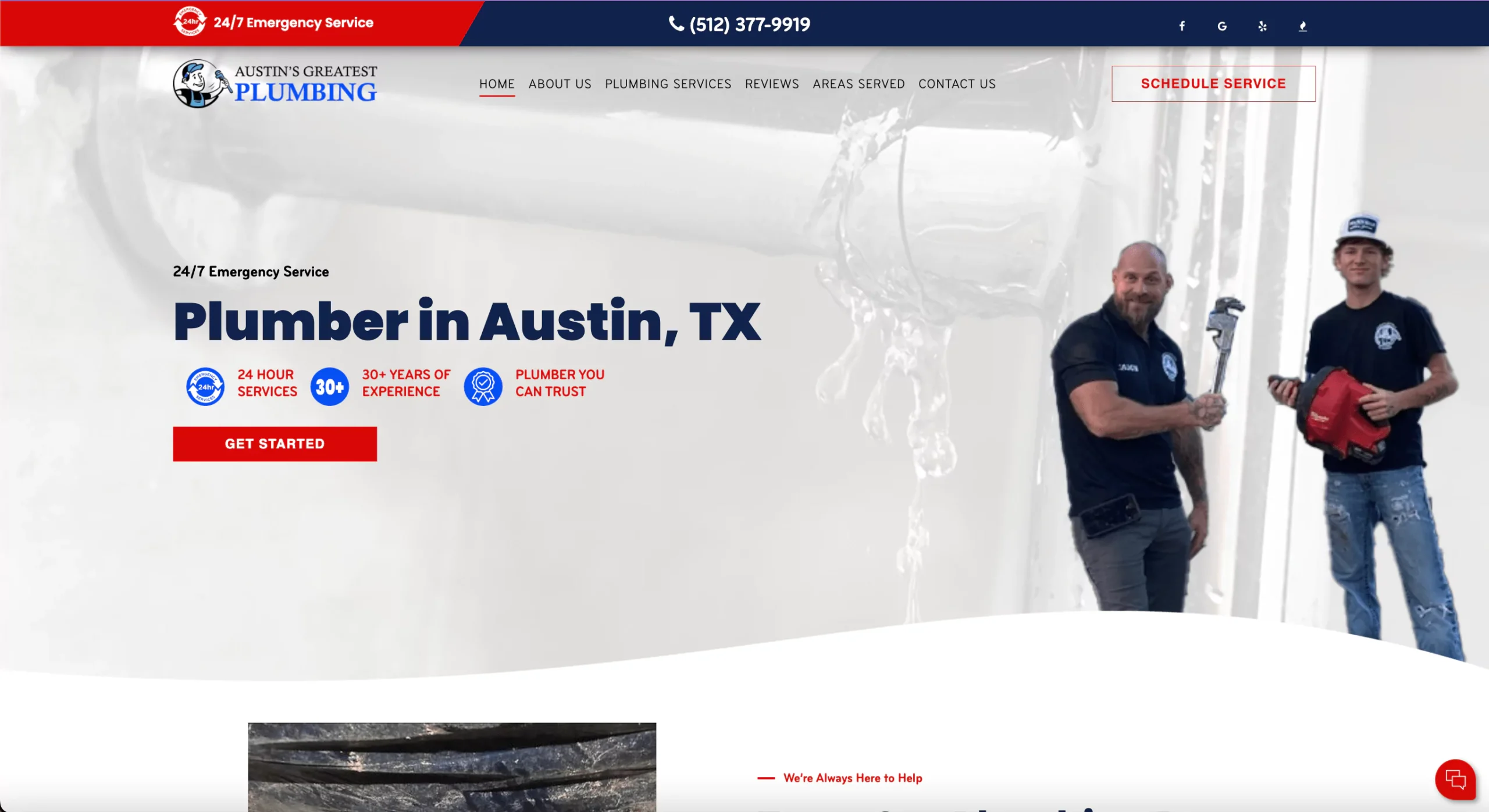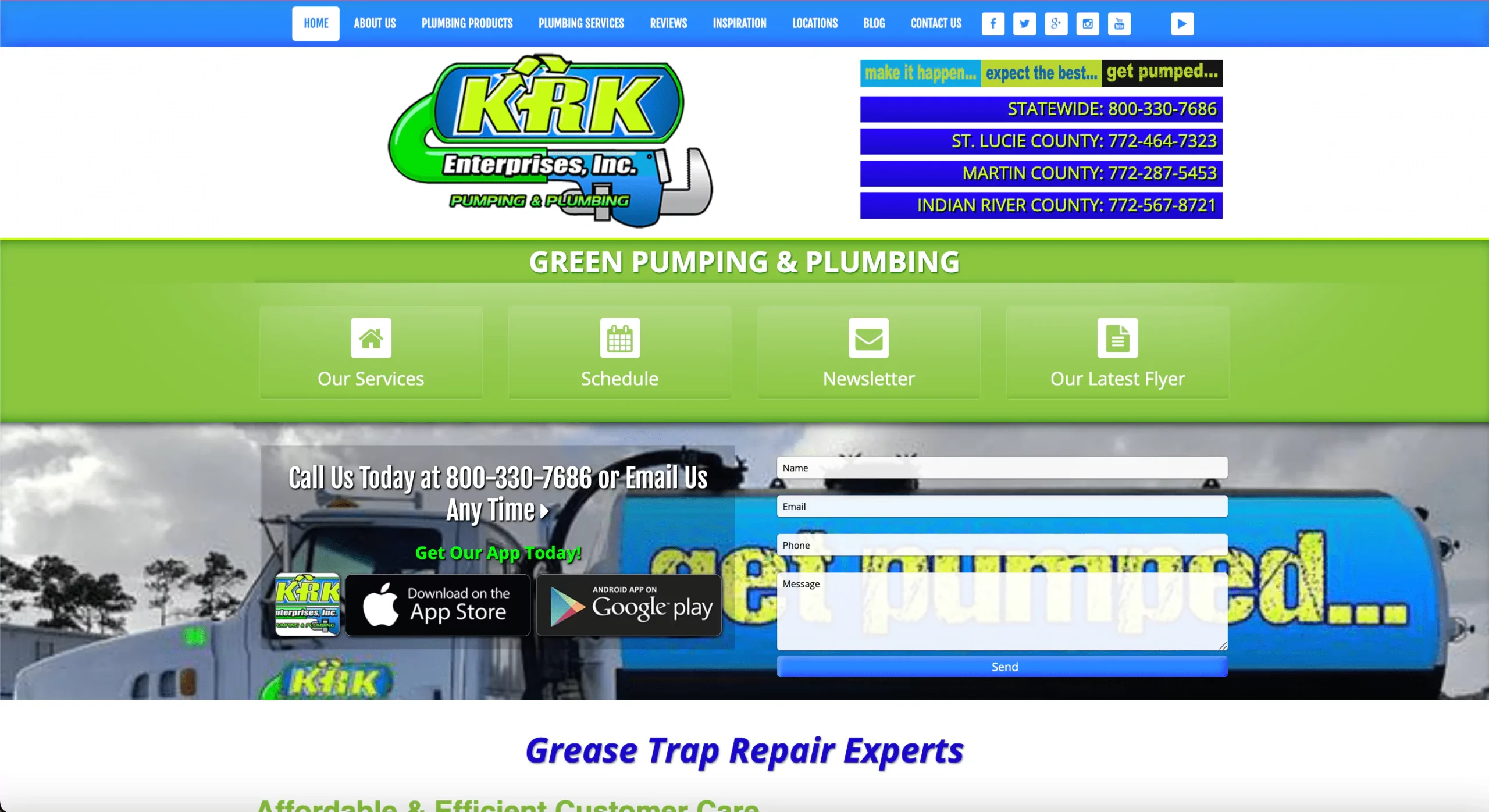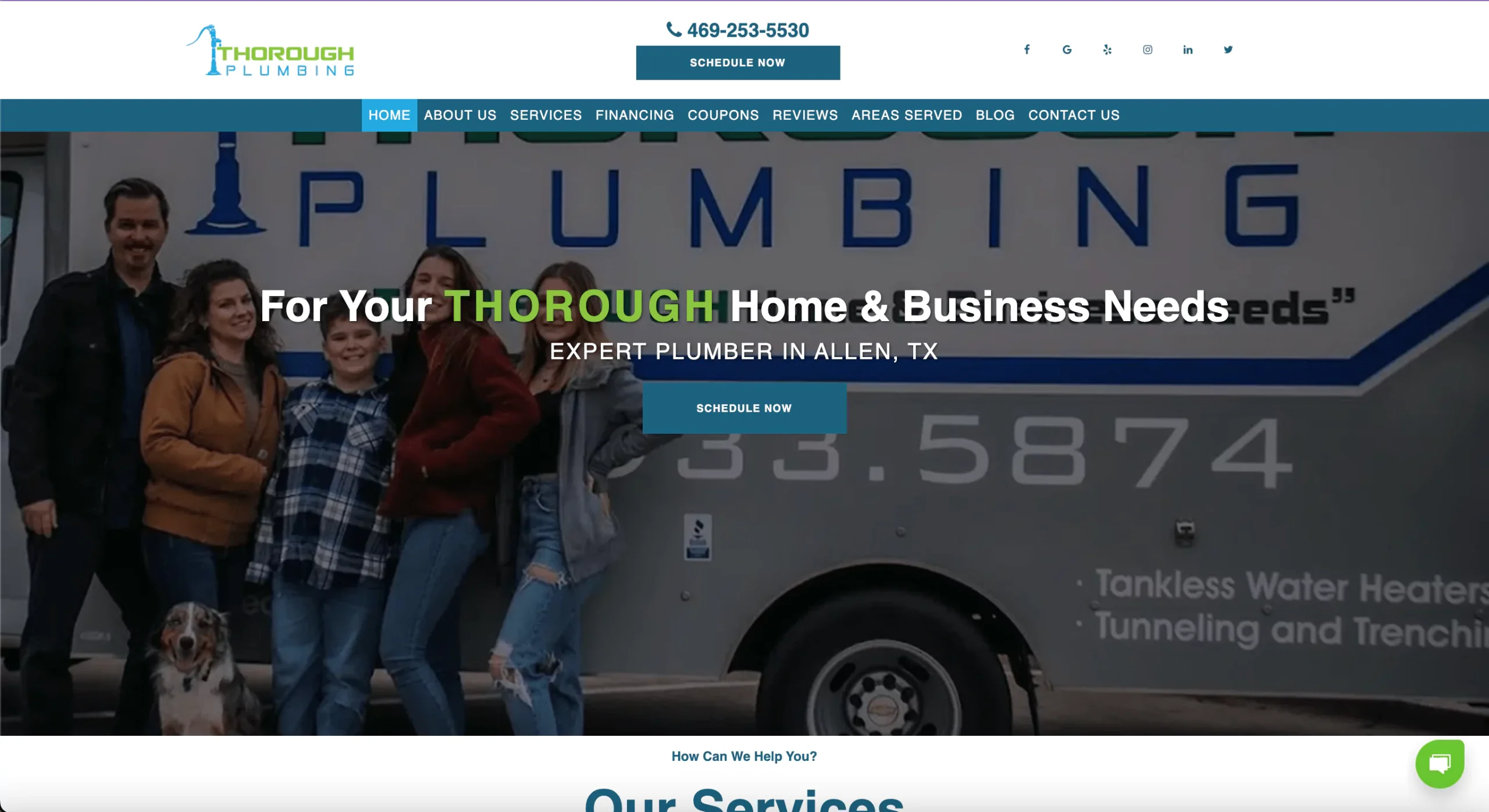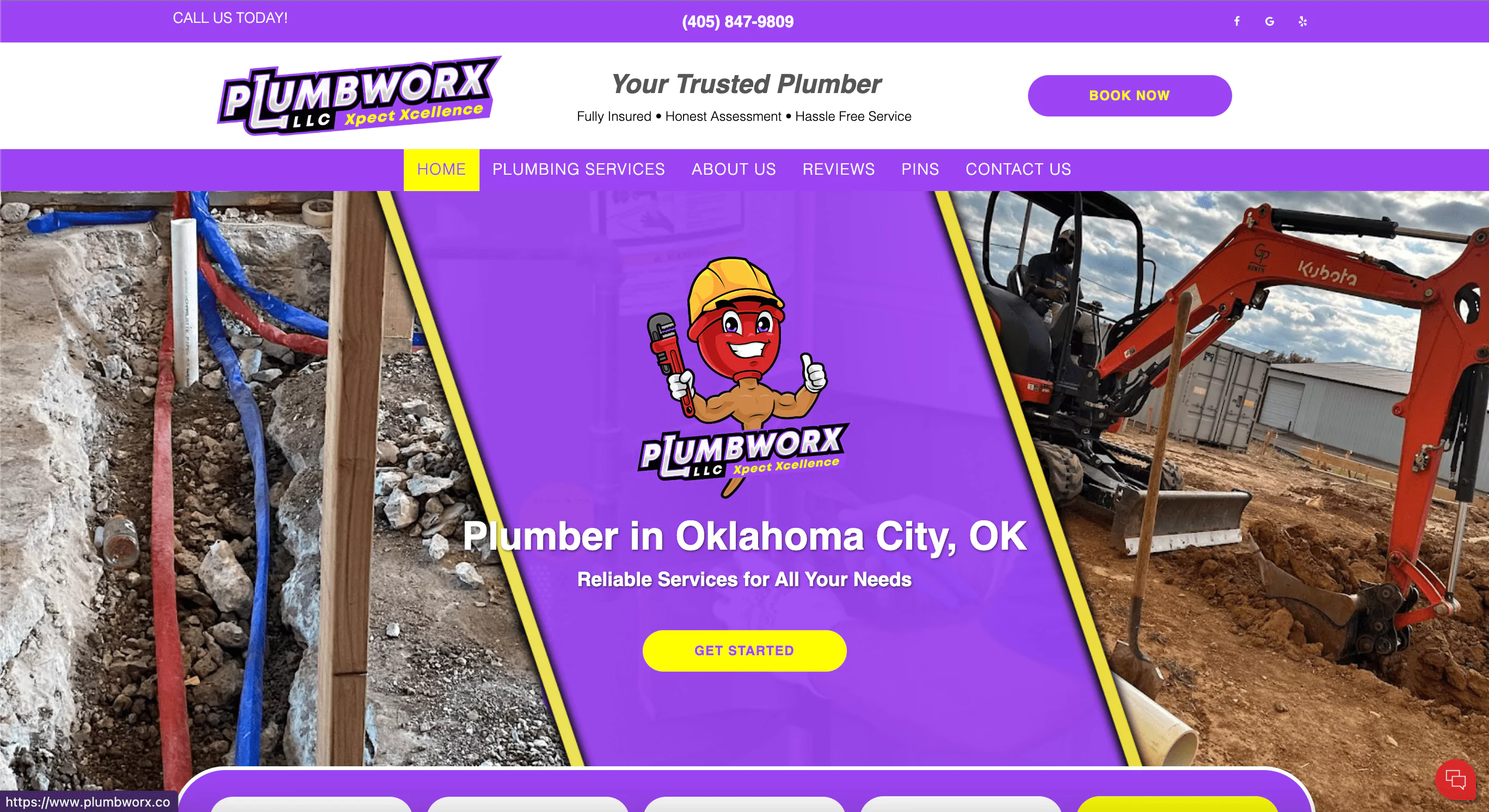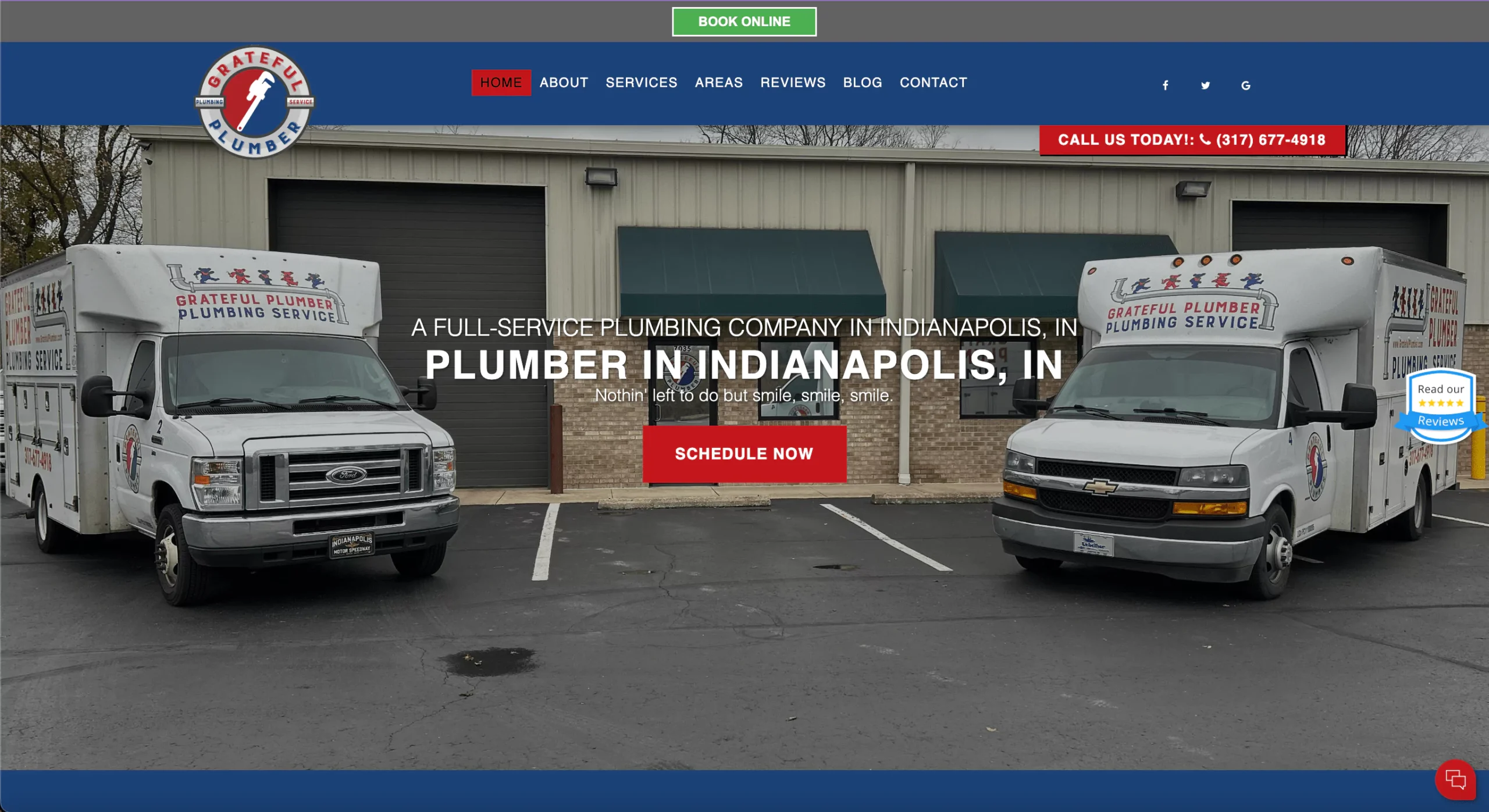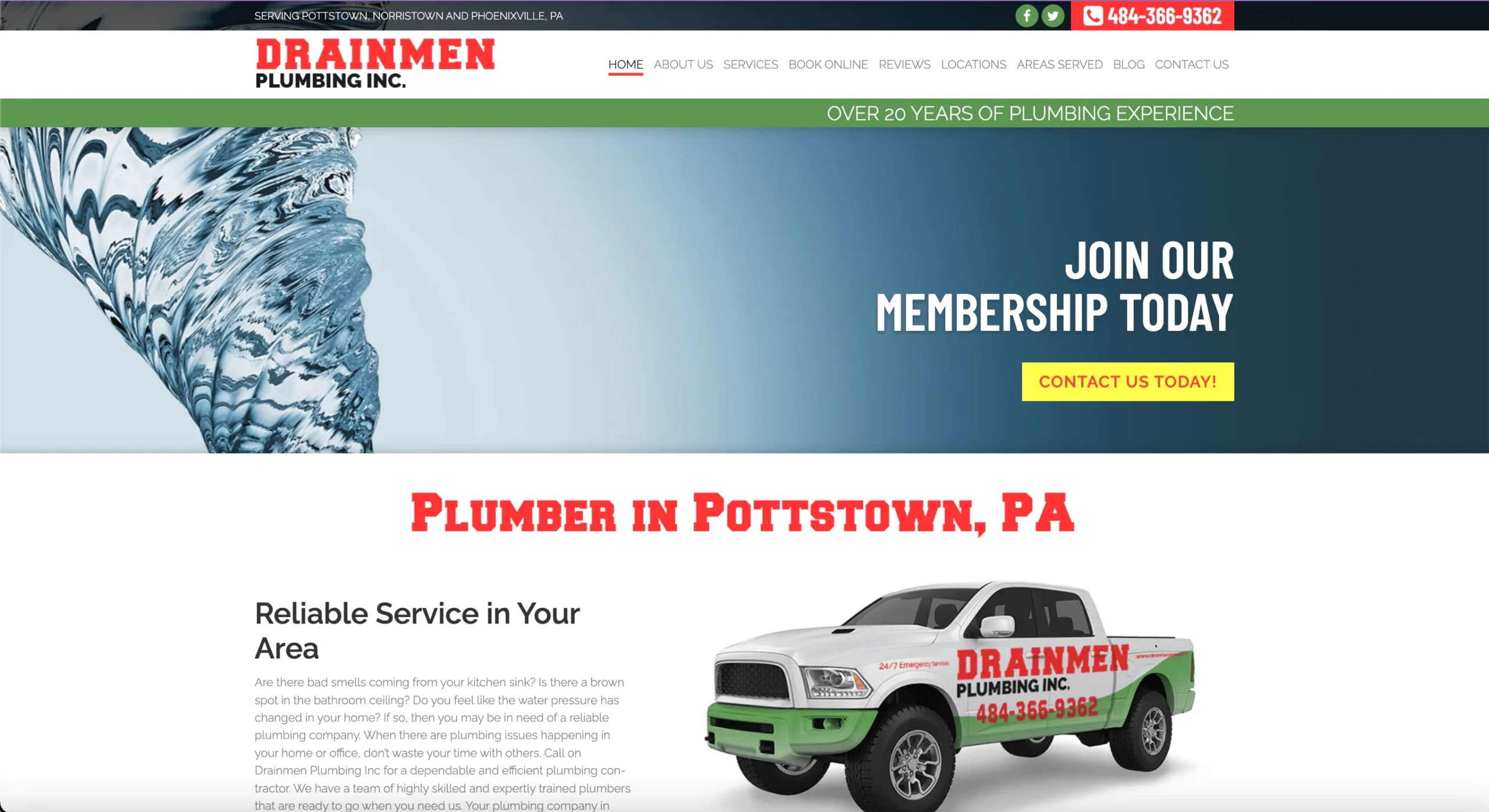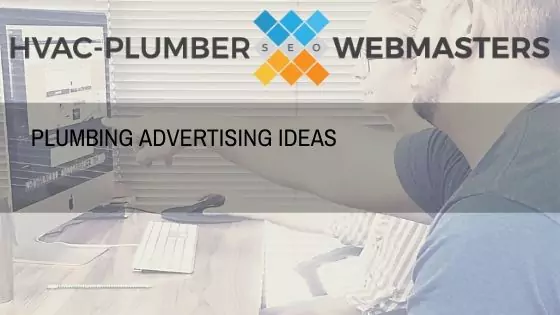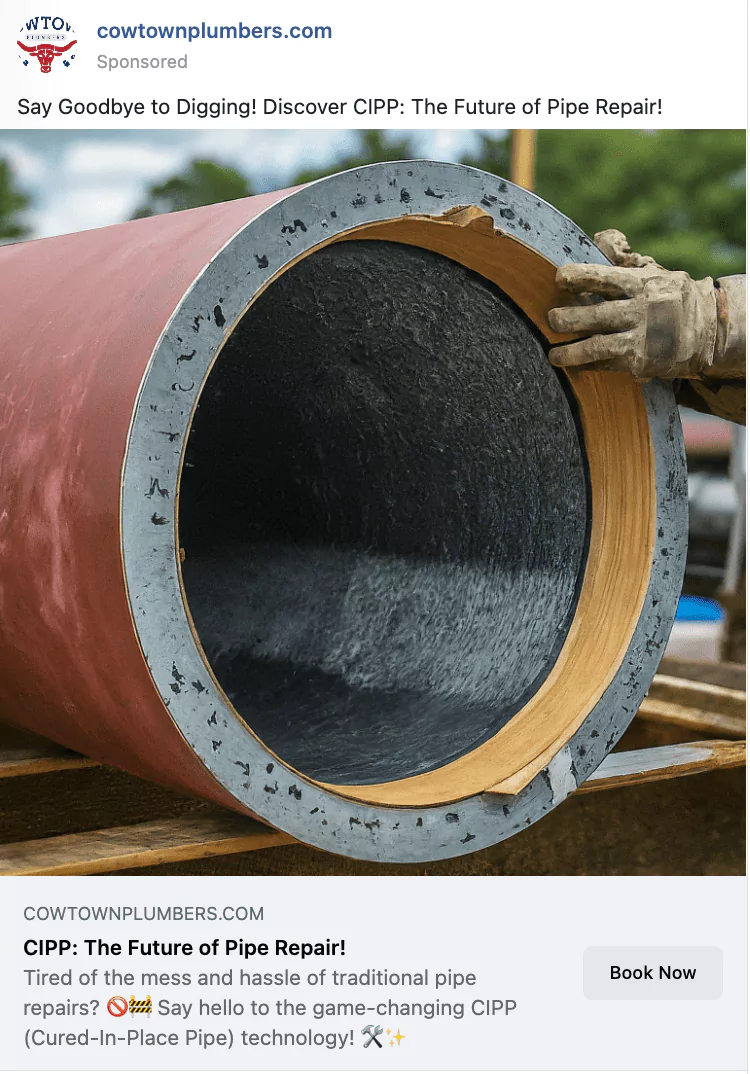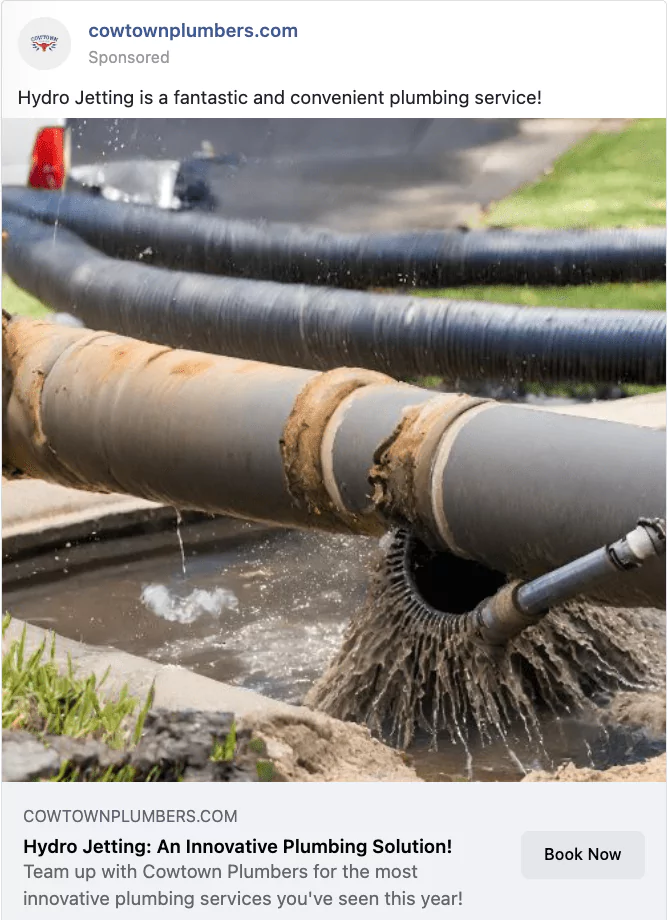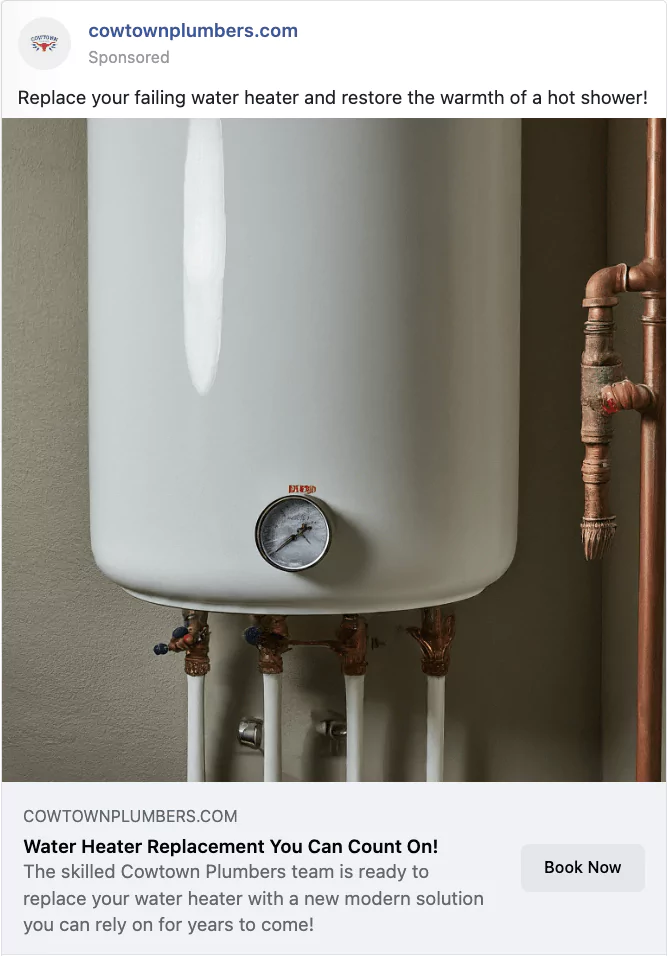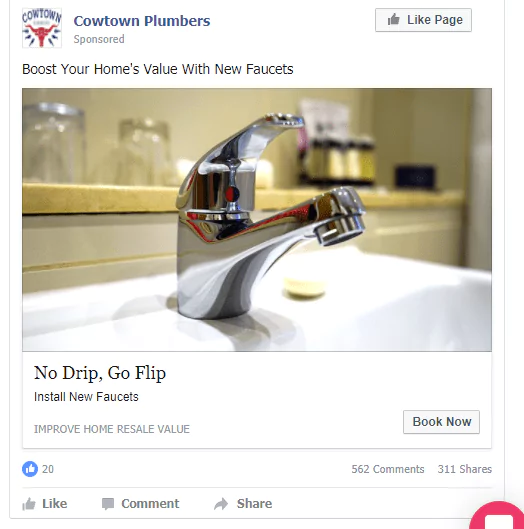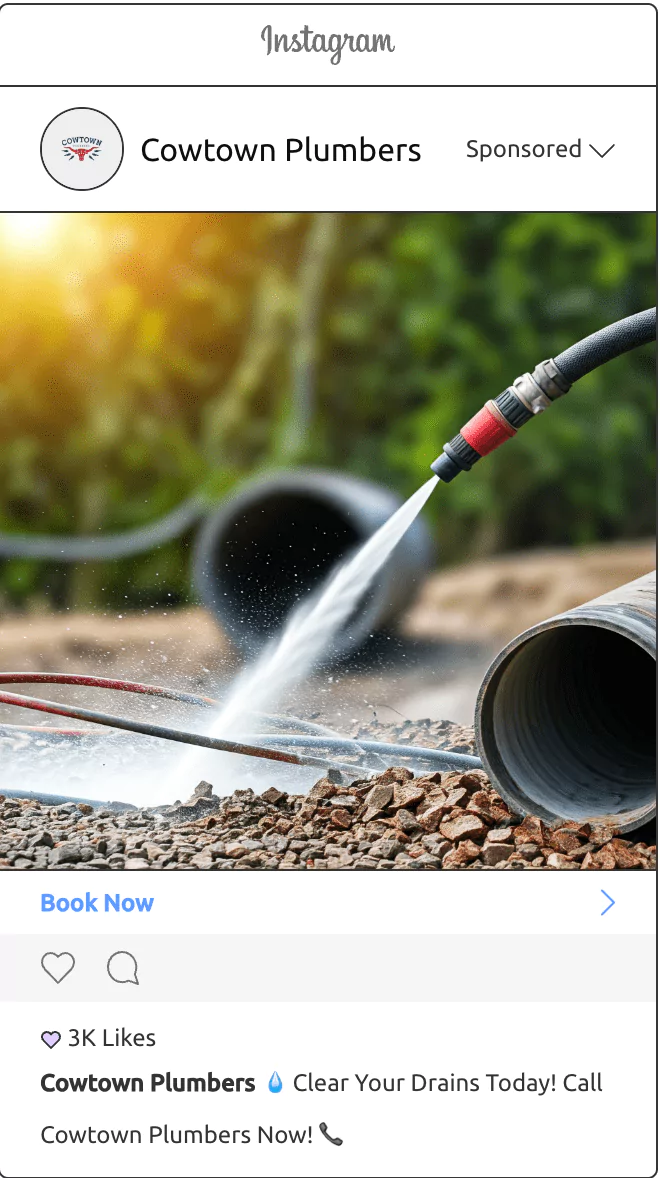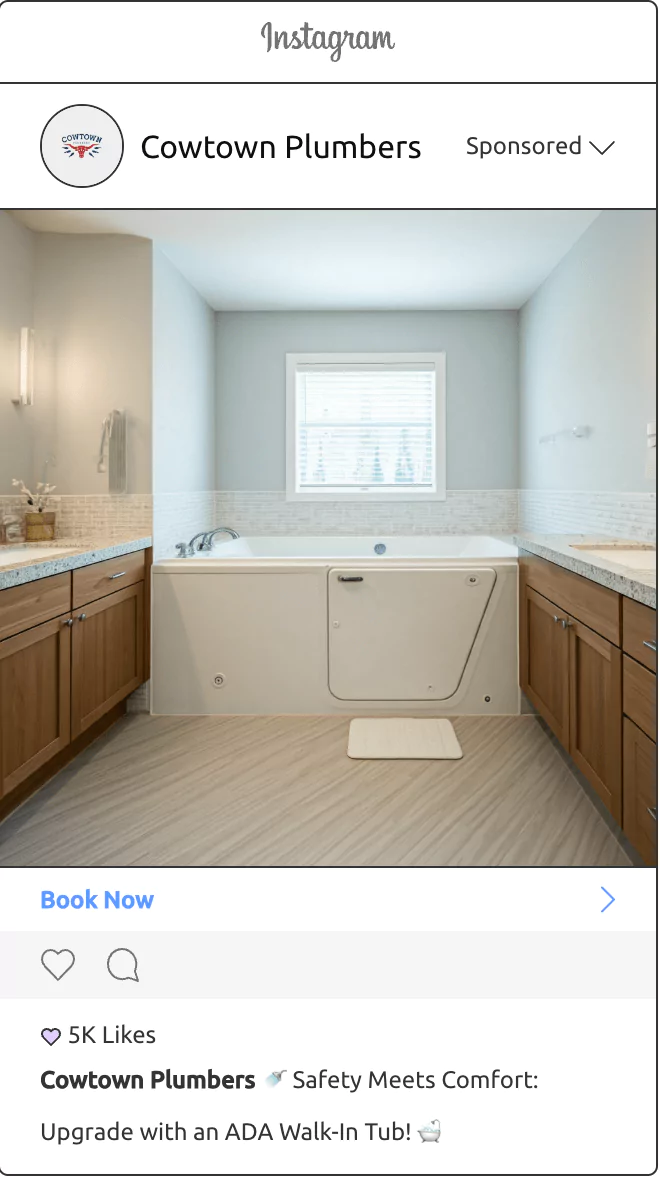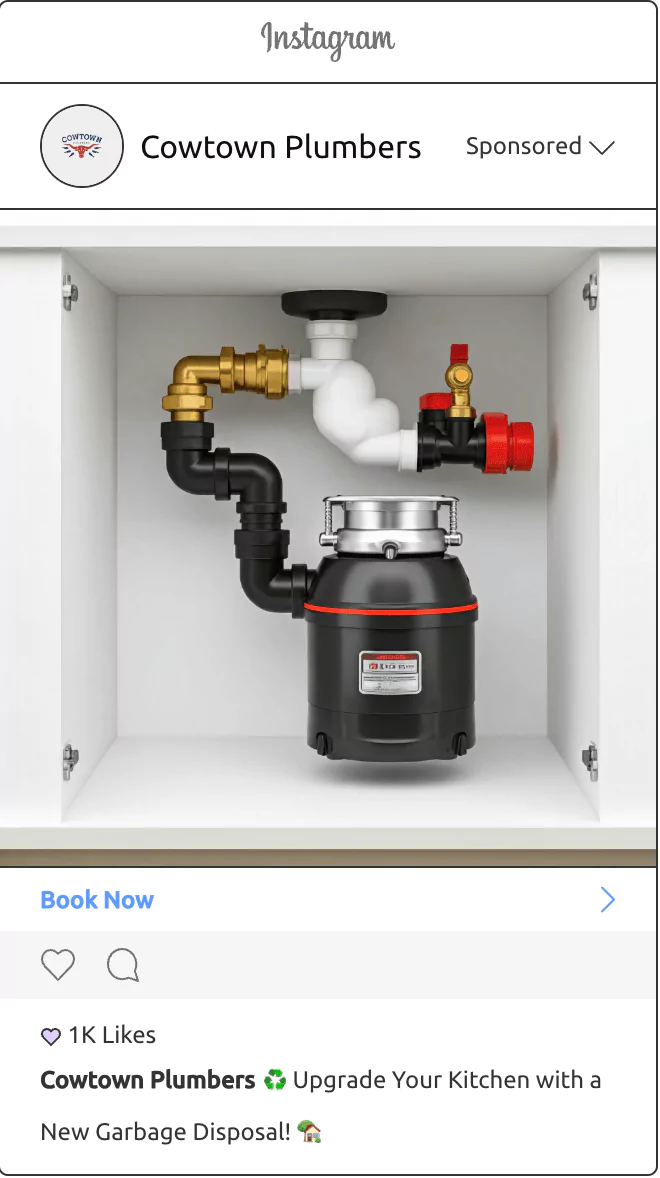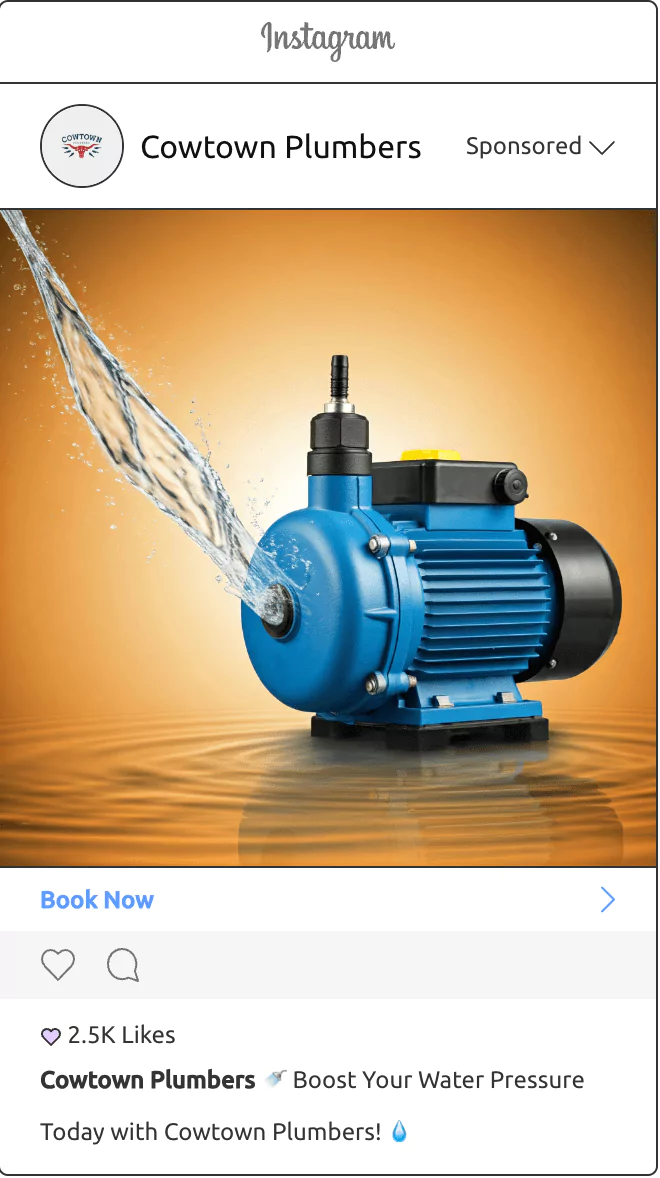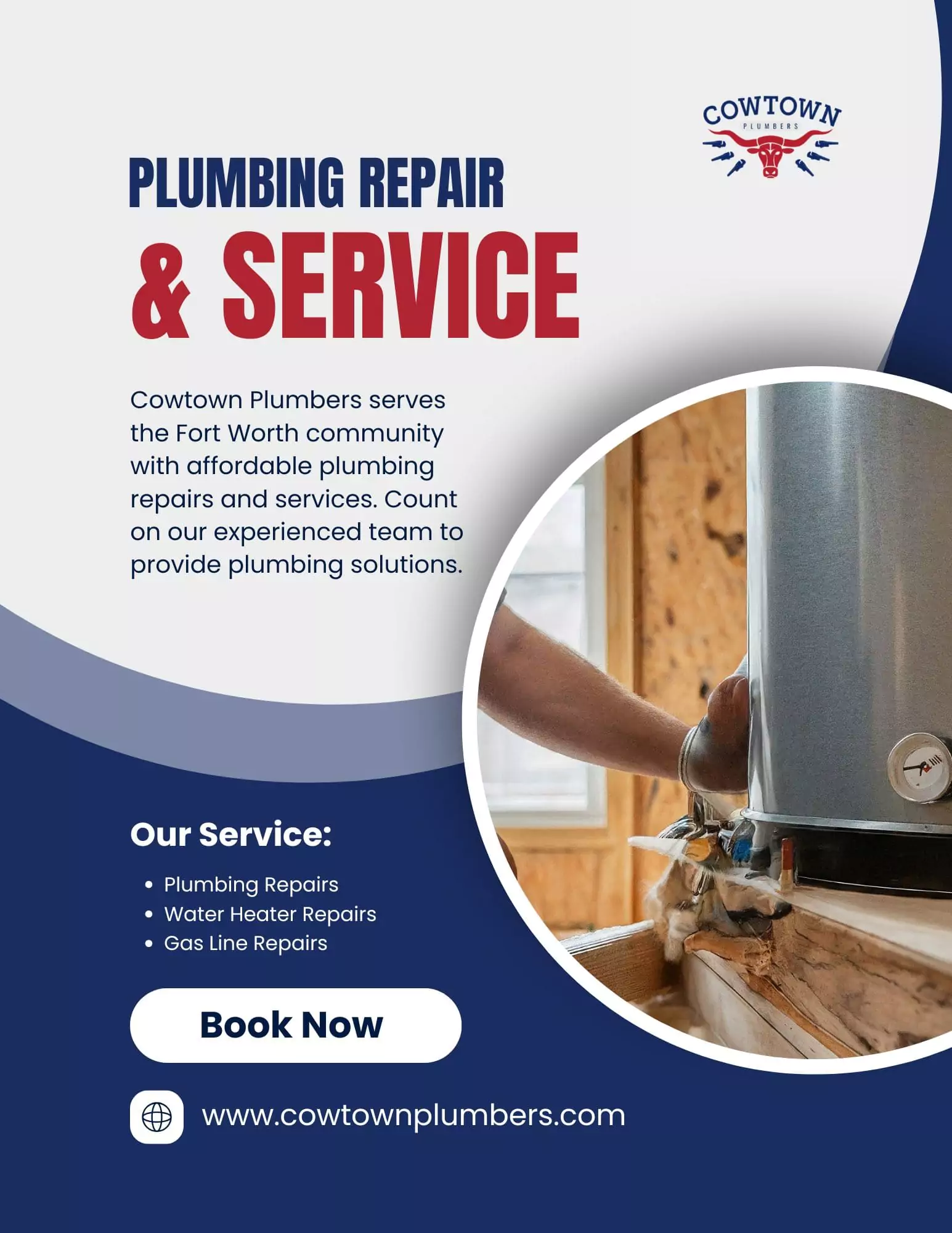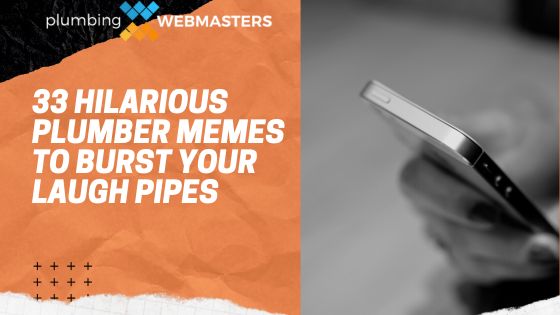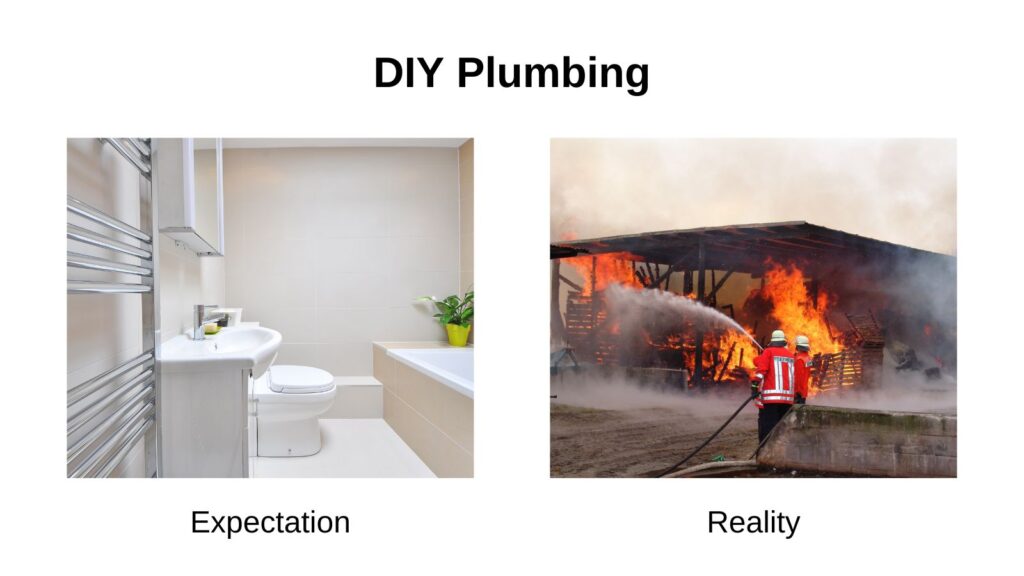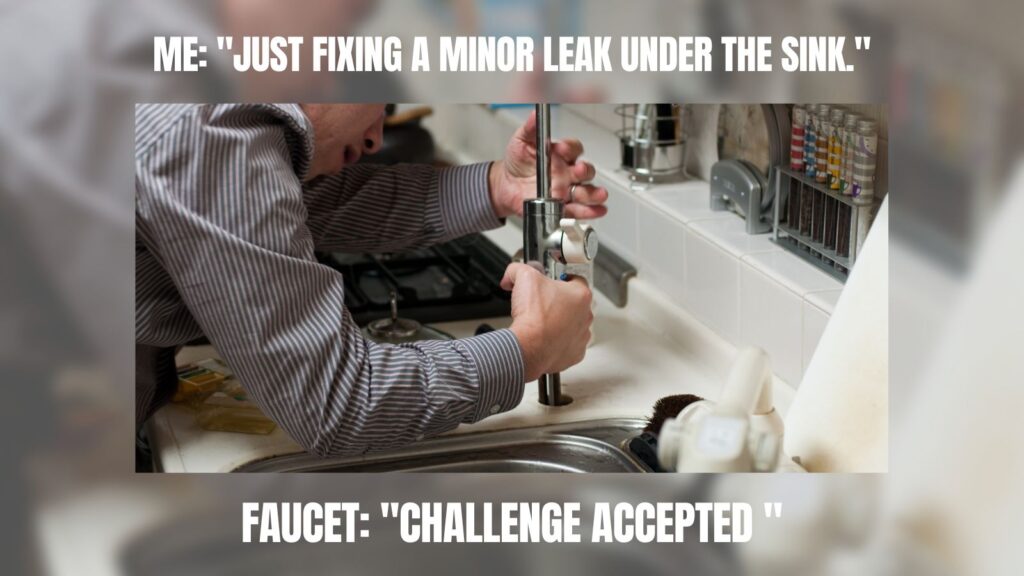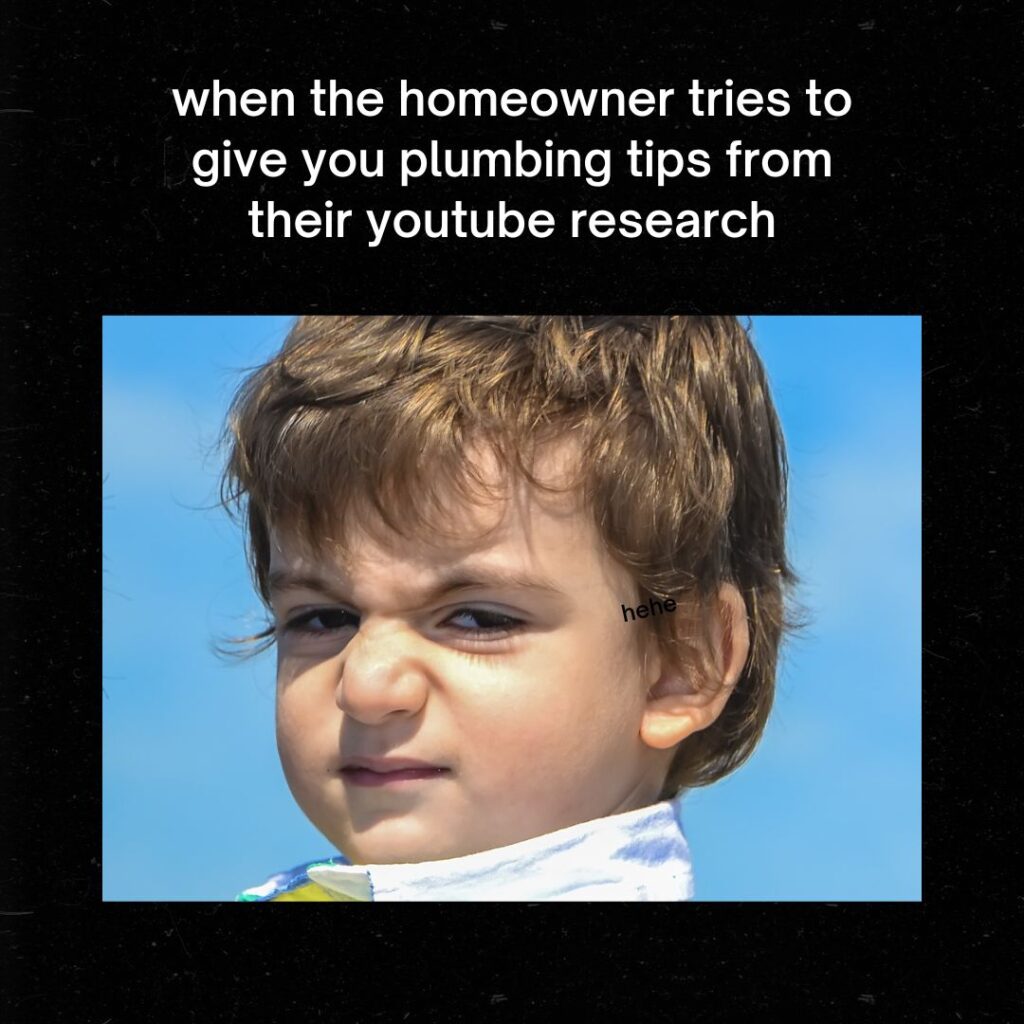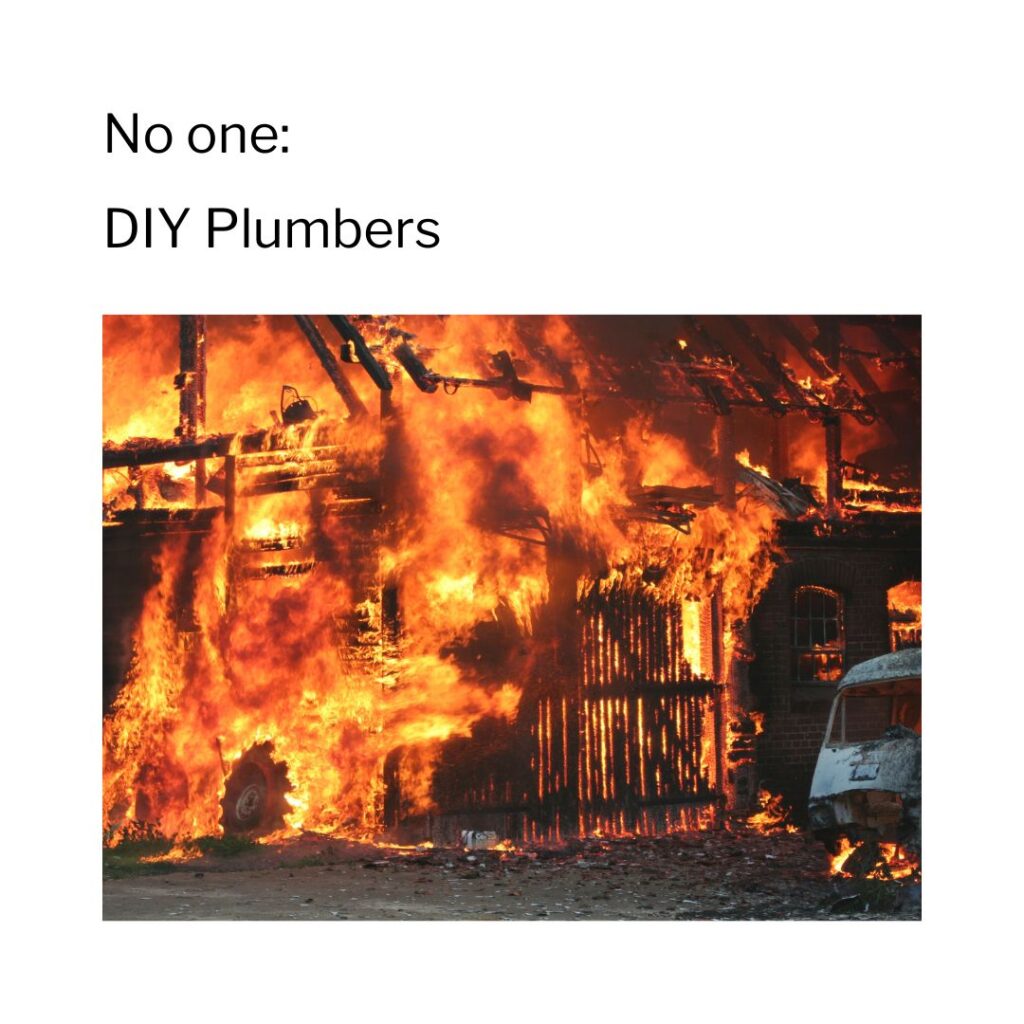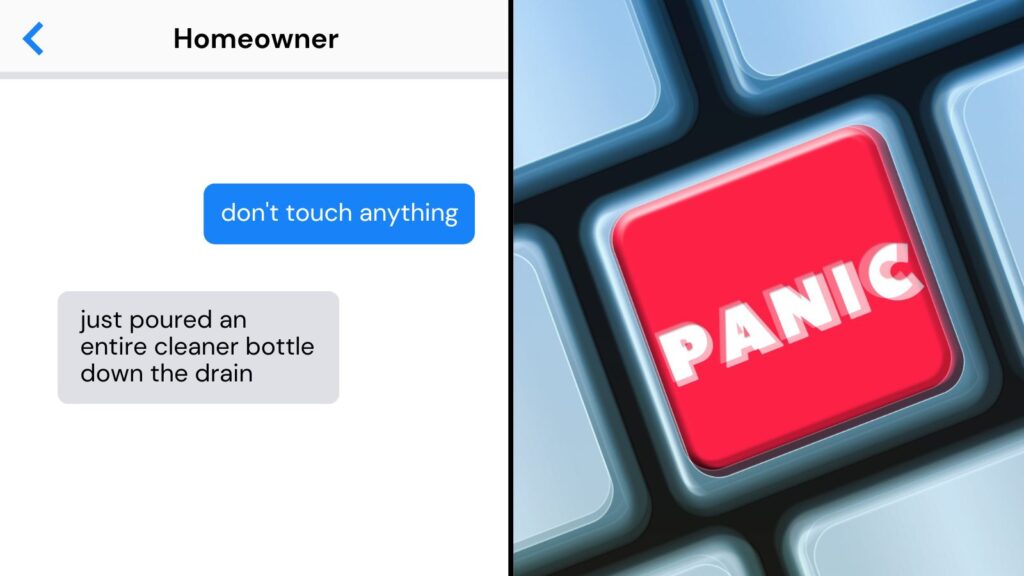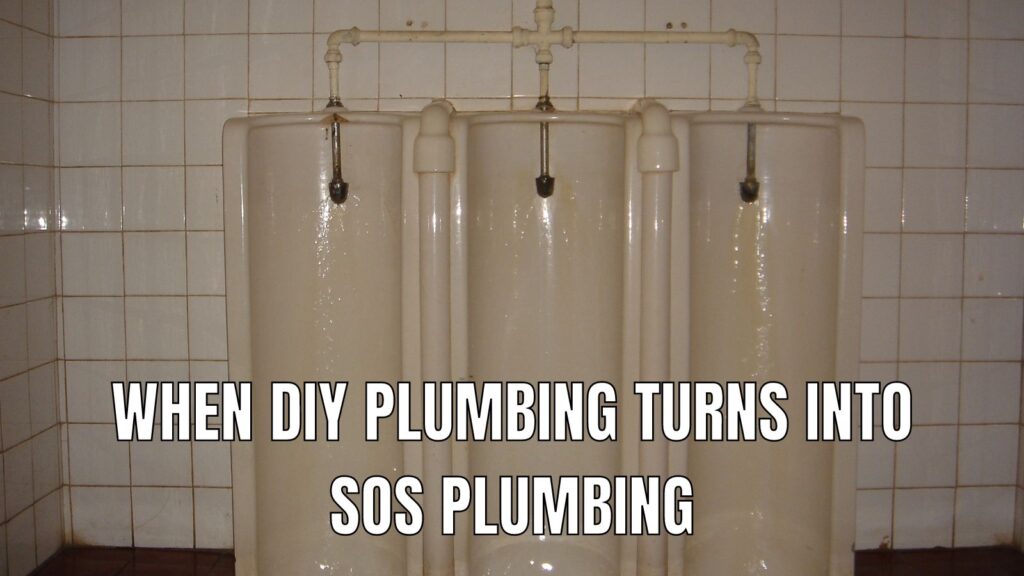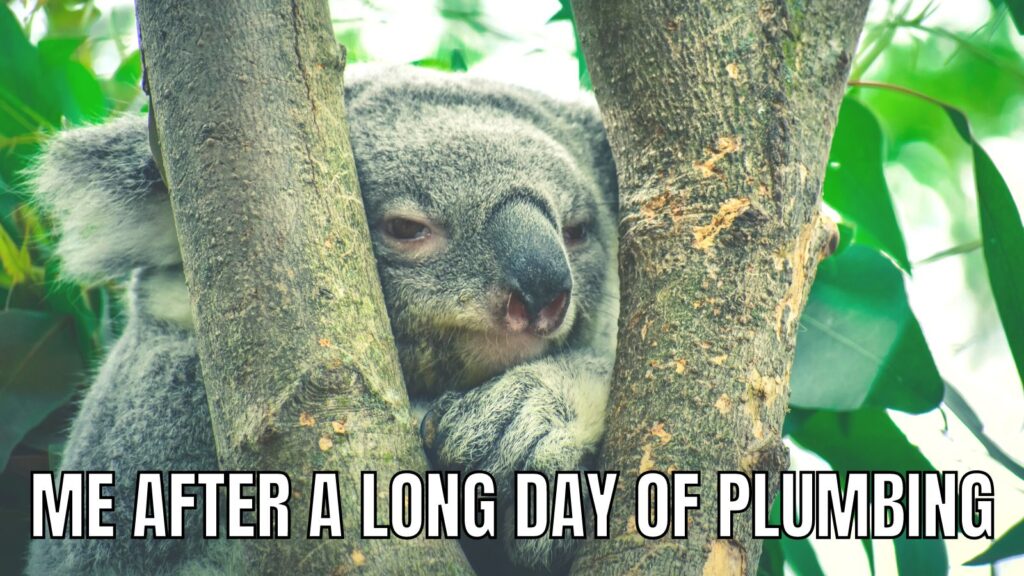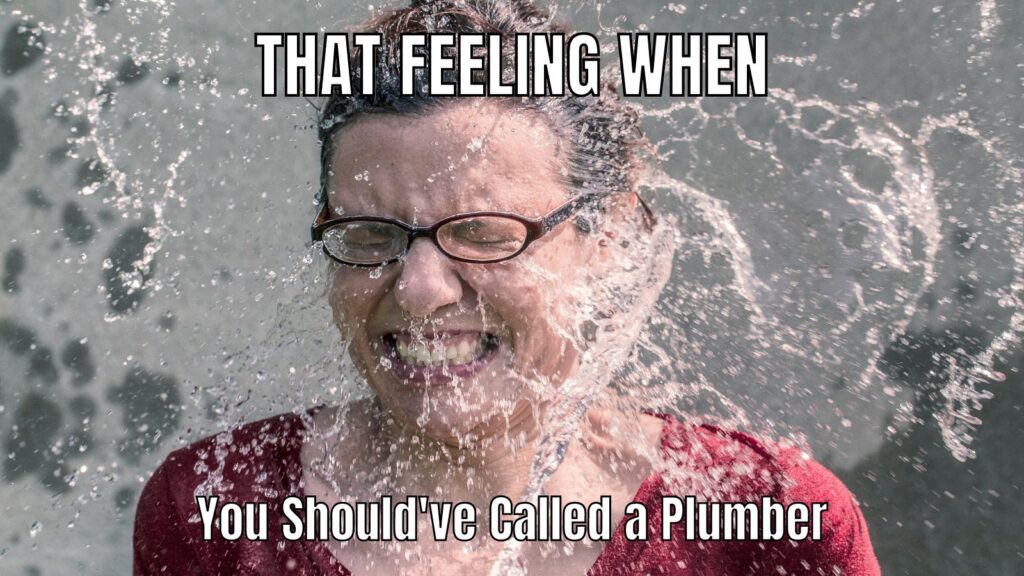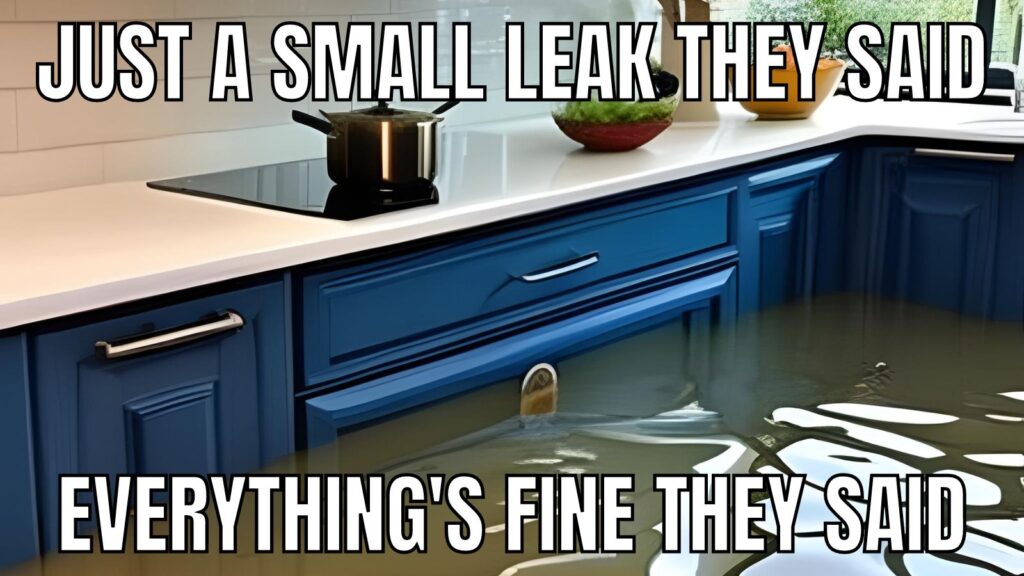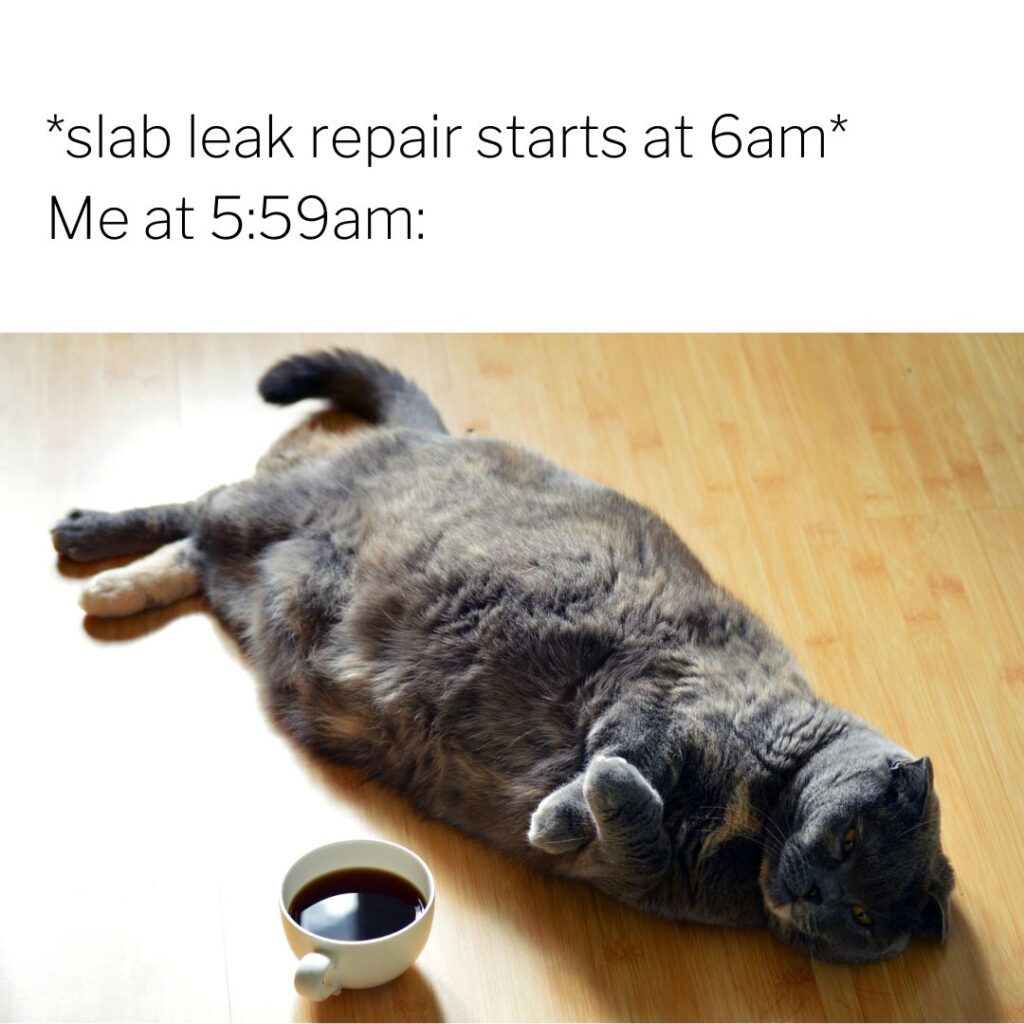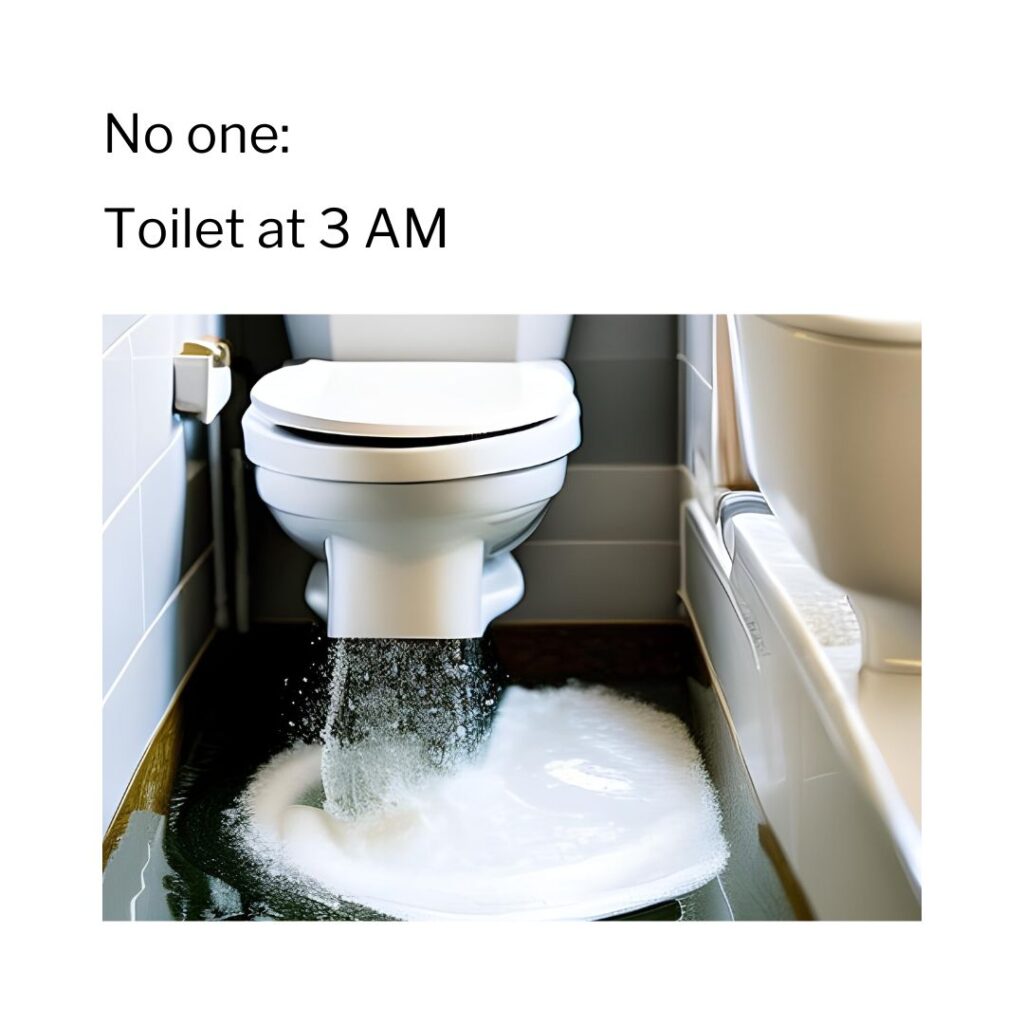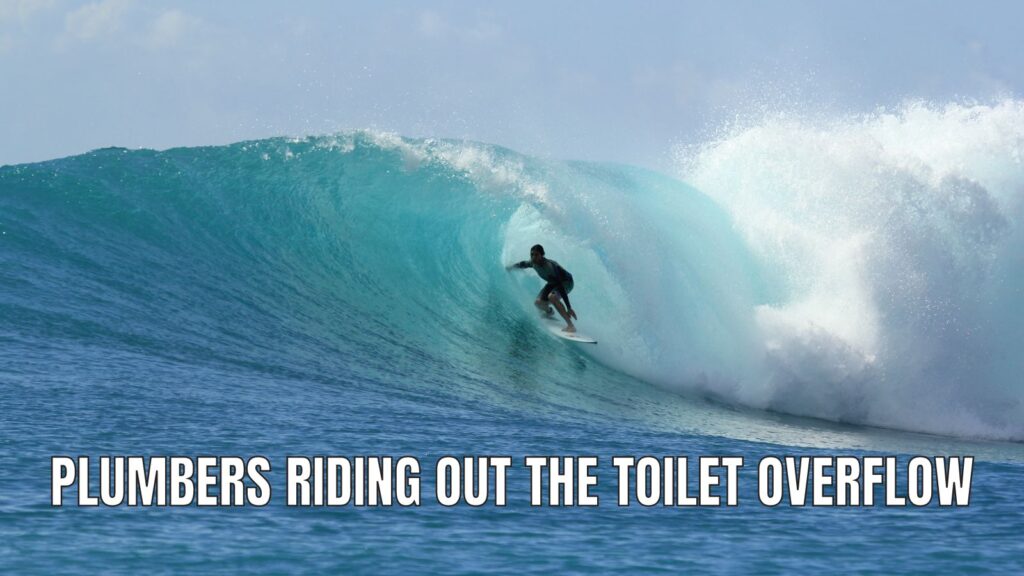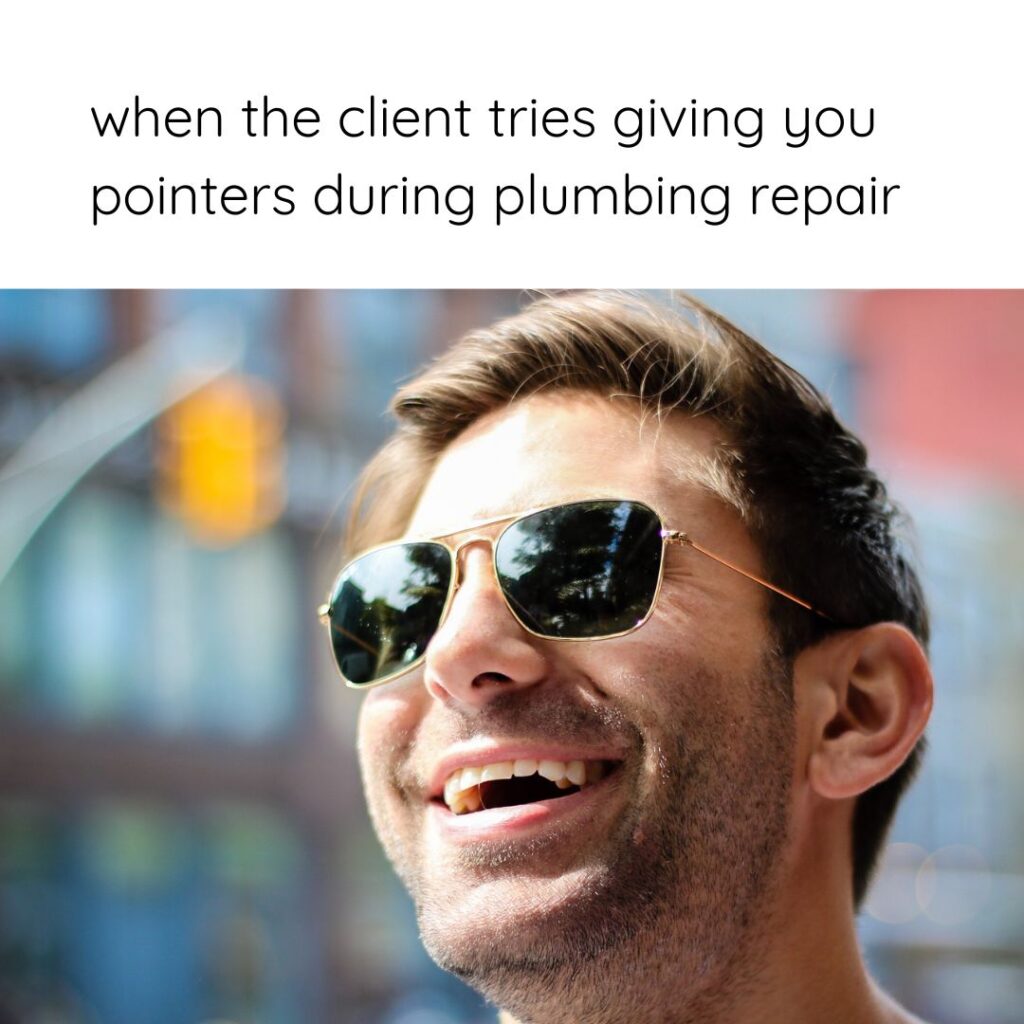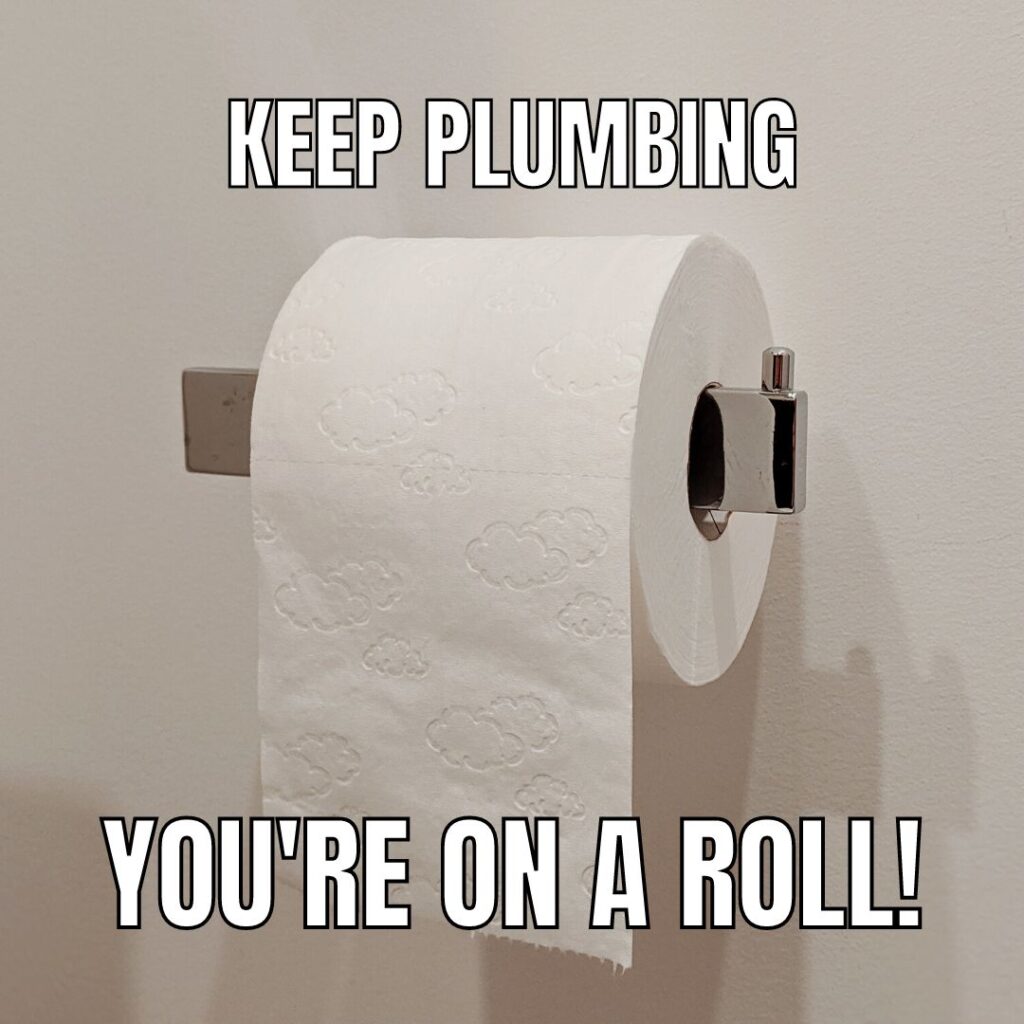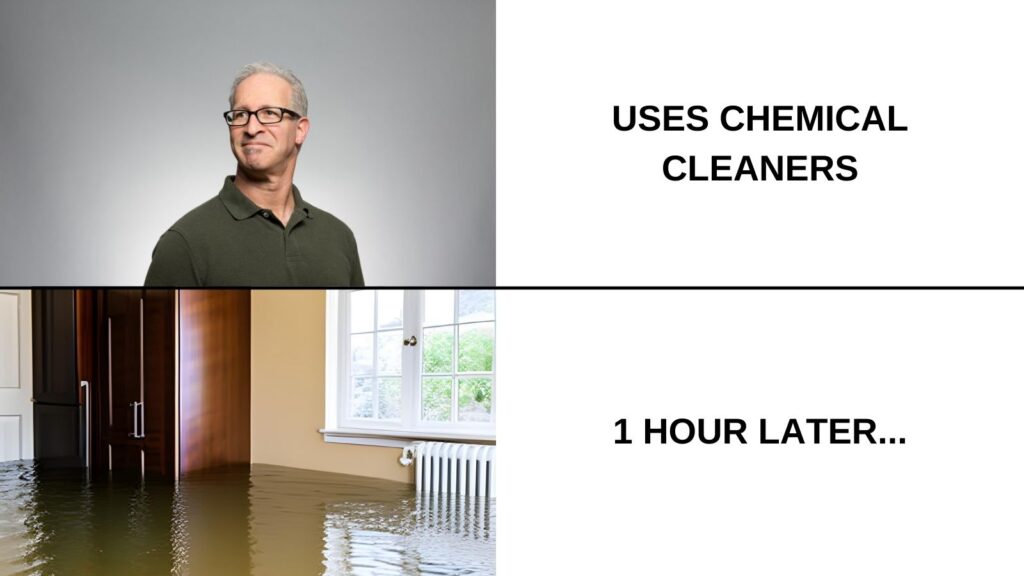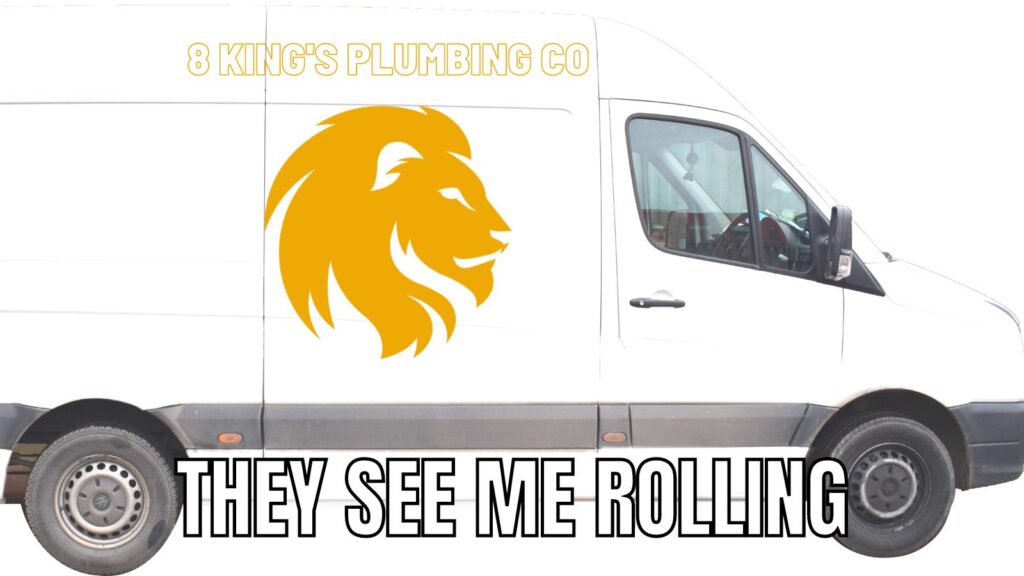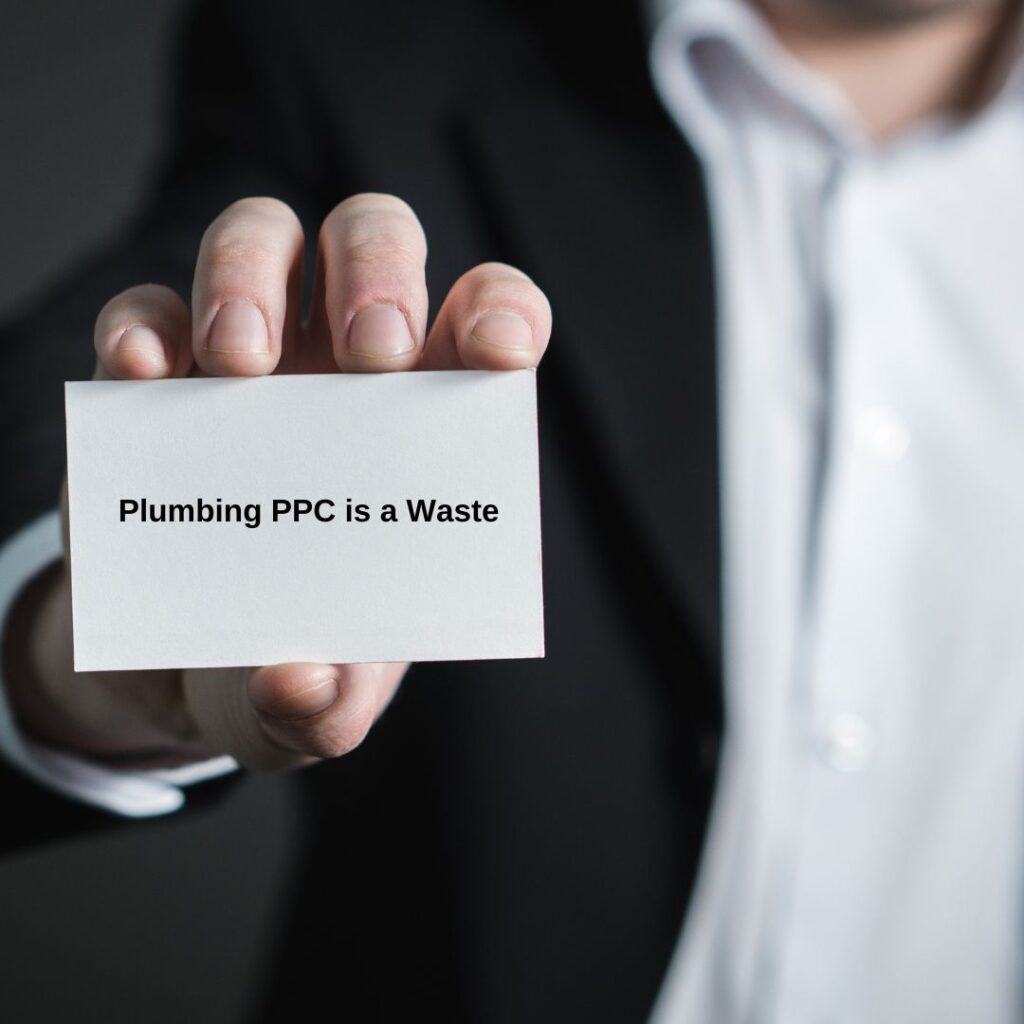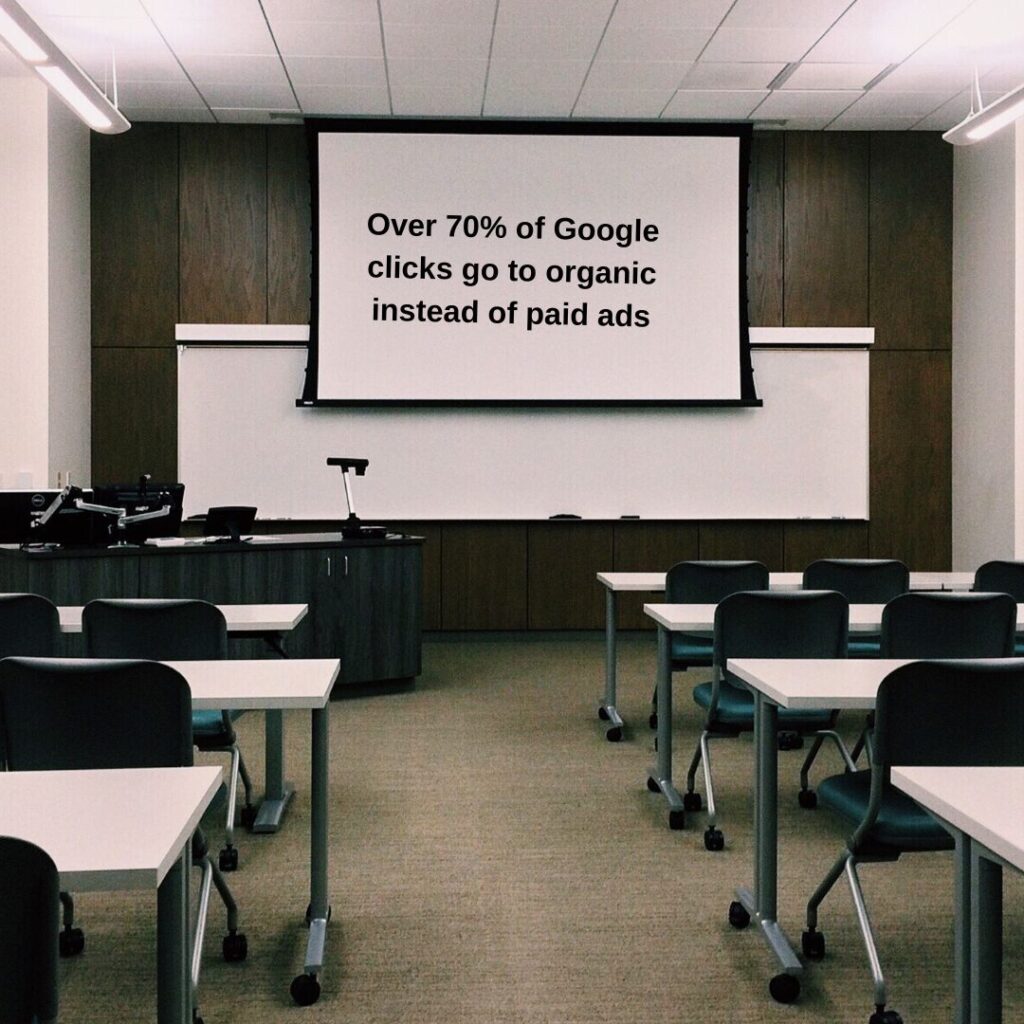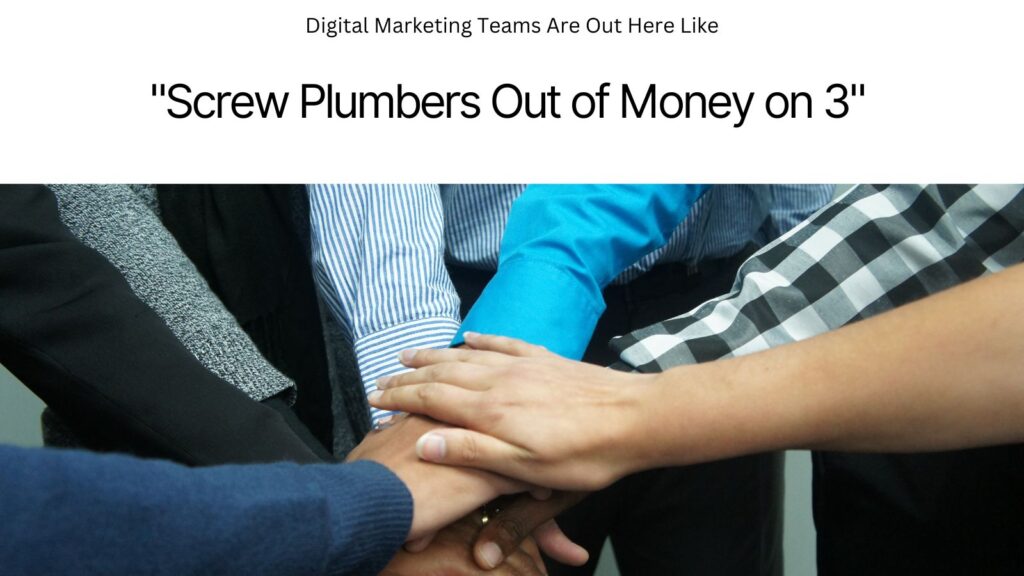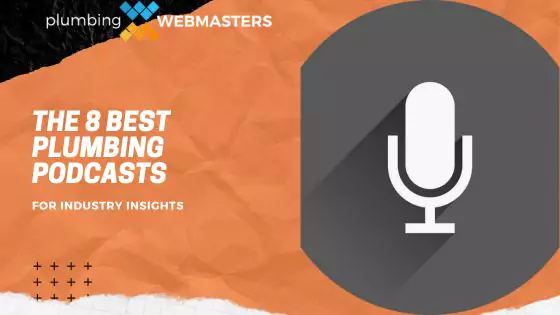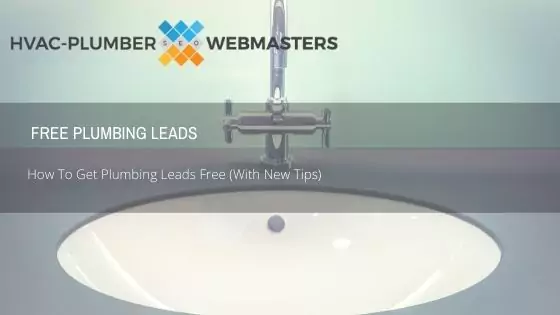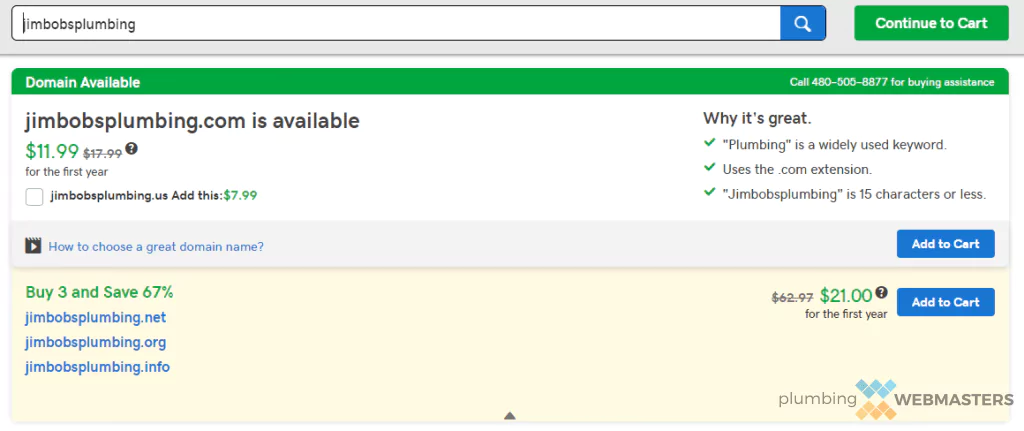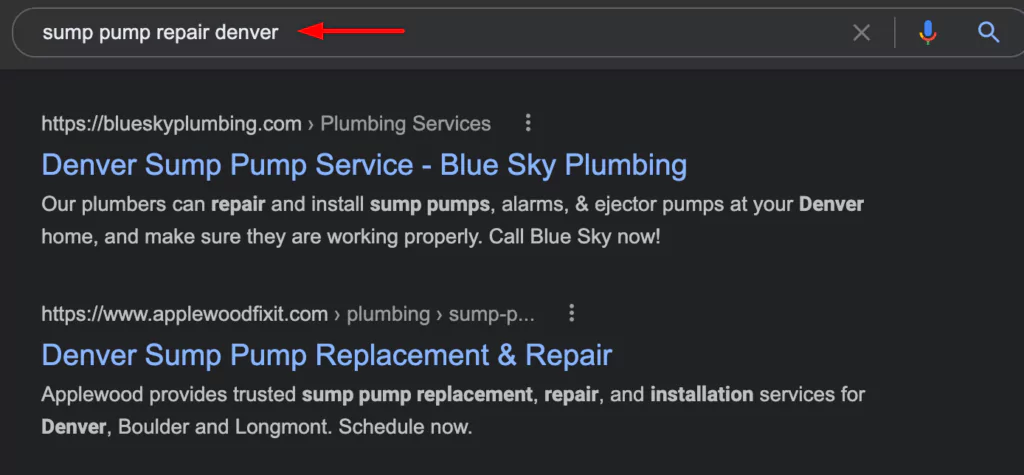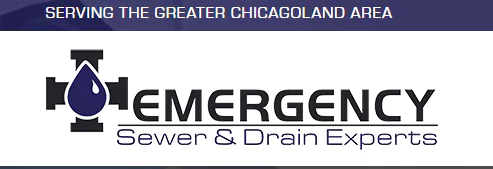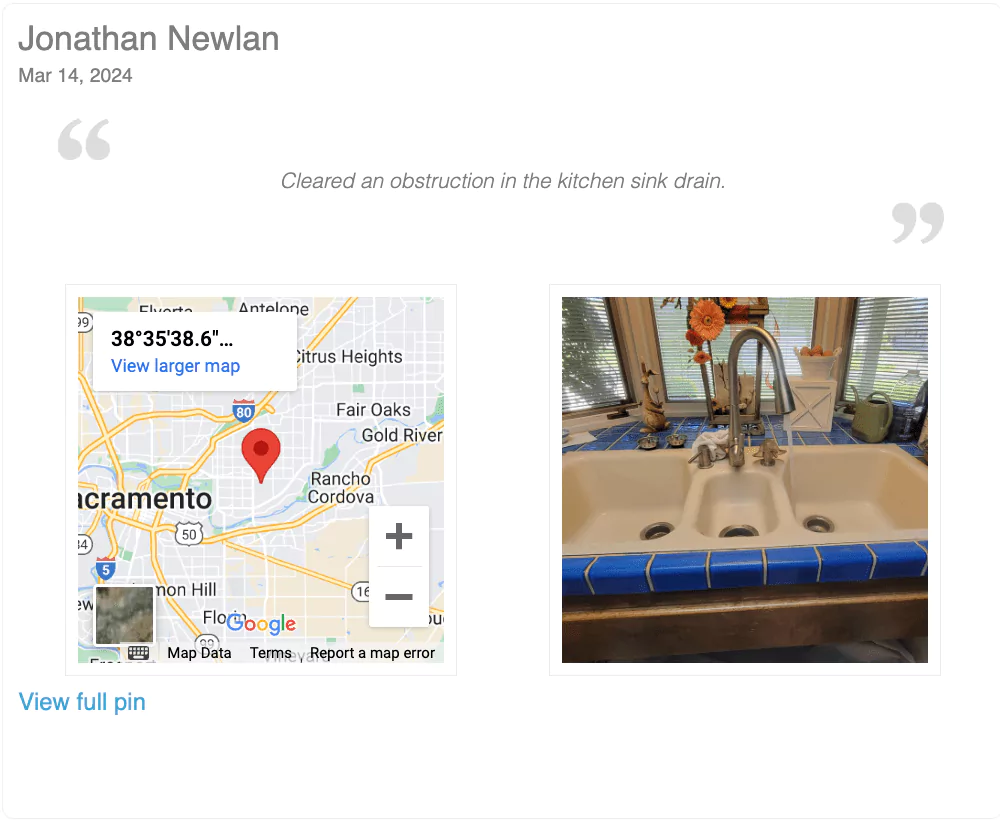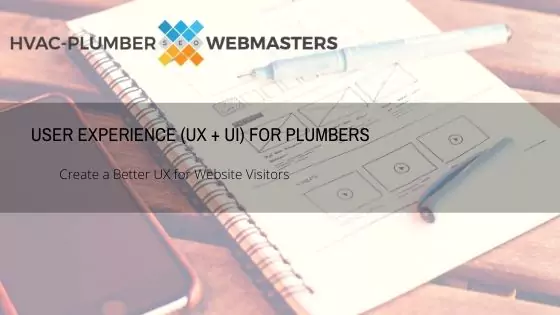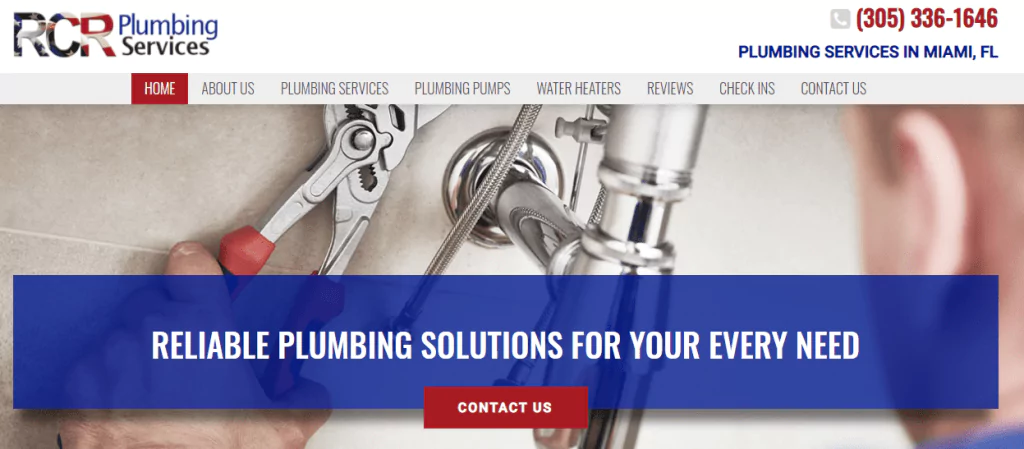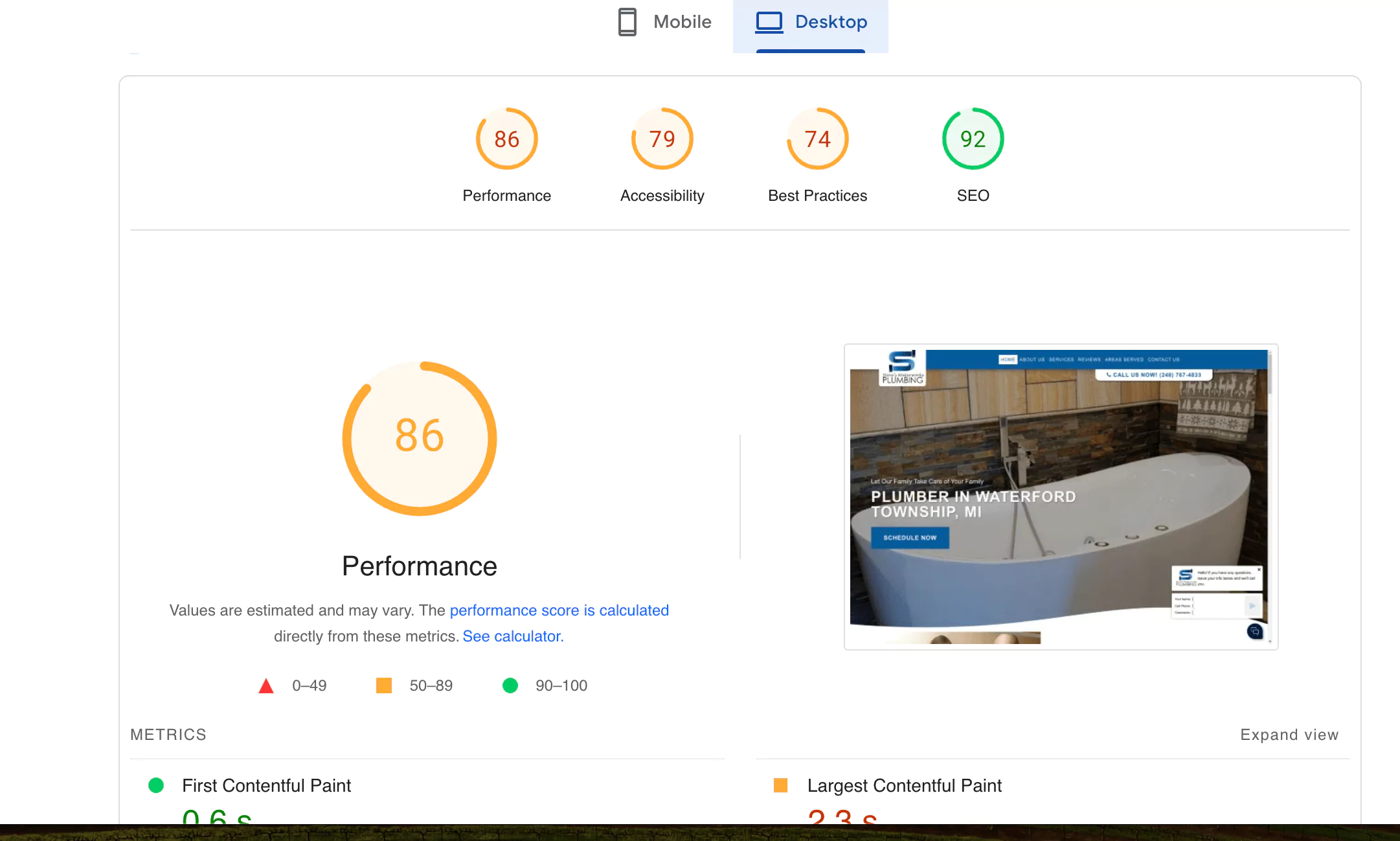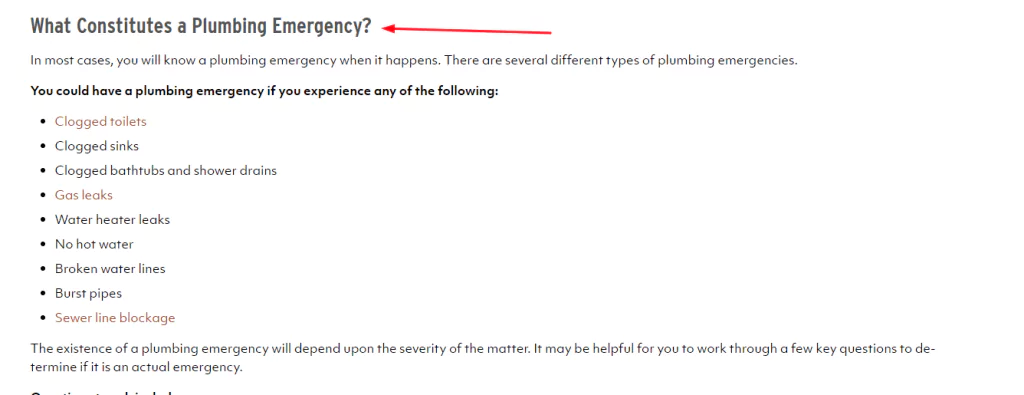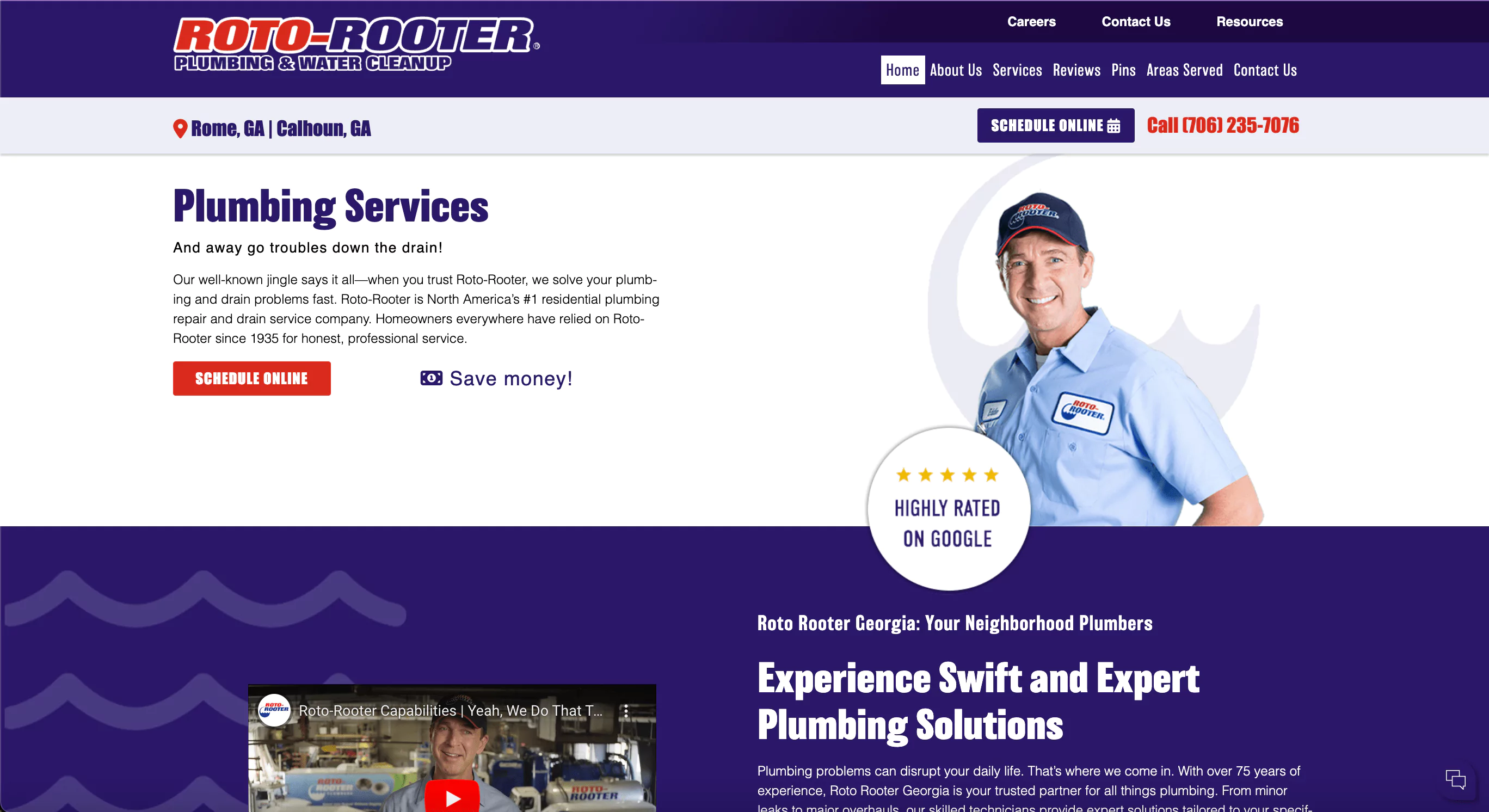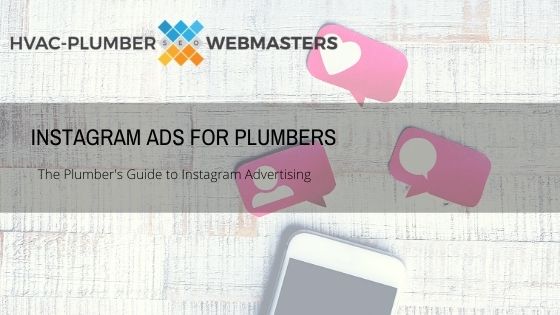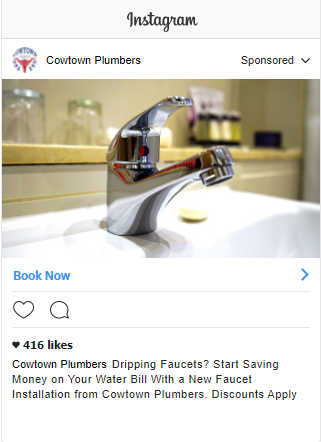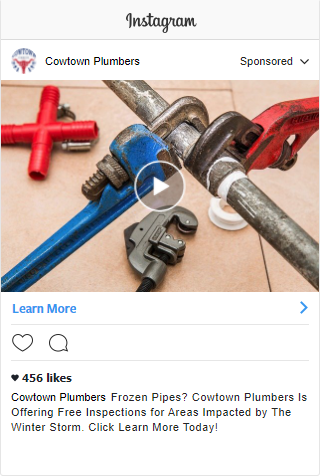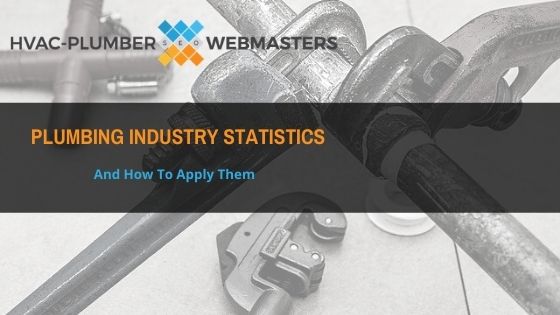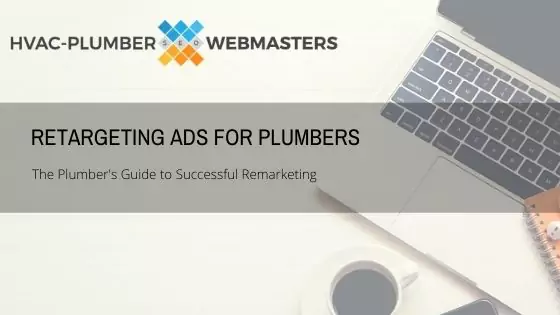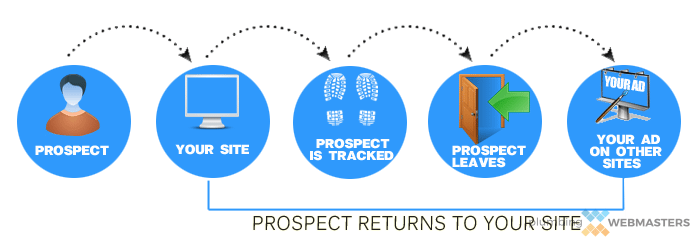An effective plumbing marketing plan transforms your plumbing business from a struggling, faceless commodity to a thriving, profitable brand.
As the founder and CEO of Plumbing Webmasters, a digital marketing agency for plumbers in the United States, I’ve witnessed such transformations firsthand.
Over the past 15+ years, I’ve worked with more than 1,000 plumbers and helped local contractors reach their ideal customers through various mediums, from Google search results to residential mailboxes.
There’s no one-size-fits-all approach for local plumbing companies, but the correct mindset and the right technology consistently yield positive marketing results for local business owners.
Below, I will outline 18 plumbing marketing ideas and strategies to propel your business to profitability in 2025.
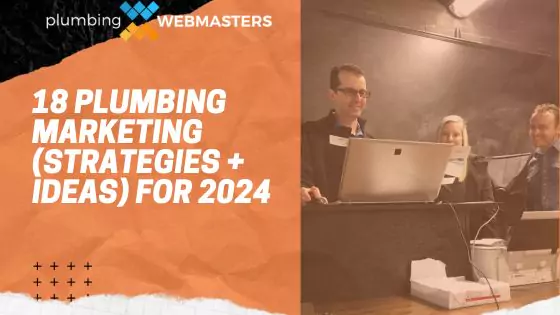
1) Search Engine Optimization (SEO)
Nearly 71% of Google clicks go to organic results, making SEO the foundation of every successful plumbing marketing strategy.
Most plumbing companies resent SEO; surveys show that only 30% are satisfied with their current SEO provider.
The SEO industry earned its negative reputation because bad actors prioritized profit over service, sullying the once popular marketing technique for local contractors.
While these frustrations are indeed warranted, the absence of a comprehensive plumbing SEO strategy (modernized for AI Overviews) is a surefire way to fail your plumbing business.
When properly implemented, plumbers quickly learn that organic SEO produces the highest-quality leads in the business.
Projected Marketing ROI: 800% – 5000%
On-Page SEO
Inserting the correct title tags, header tags, and content format onto your plumbing website is one of the most impactful ways to market your business.
Depending on the size of your market, simple on-page tweaks are often enough to get you ranking #1 for specific service-based keywords.
Off-Page SEO
Off-page signals like directory listings, backlinks, and other brand mentions impact your website rankings and strengthen its authority.
The key to successful off-page SEO is maintaining brand consistency and ensuring each platform links back to your business website URL.
Multichannel SEO
Ranking on other channels beyond Google can also help you rank on Google.
For example, ranking for plumbing keywords on YouTube gives your video a chance to appear directly on Google SERPs for that same keyword.
It also helps to rank within search results for plumbing-related terms on Facebook, Instagram, TikTok, and other relevant platforms.
2) Local SEO (Google Maps Ranking)
There’s a marketing saying, “Put yourself on the map,” and it’s never been more literal than in 2025. Today, “the map” in its most literal sense is Google Maps.
Search queries are adjusted based on the searcher’s geo-location, meaning the query plumber will deliver different results depending on where you search.
Local SERPs yield a group of results known as the Local Map Pack, which consists of 3 Google Maps listings that are most relevant to the user based primarily on their location.
Google Maps links with Google Business Profile to show the aggregate star rating of a plumbing company.
The marketing effect of Google Maps rankings is noteworthy, as up to 70% of mobile searches for local businesses result in clicks on the 3-pack.
Projected Marketing ROI: 100% – 5000%
Google Business Profile
Claiming your existing Google Business Profile or creating a new one (if one does not exist) is the first step toward local SEO success for plumbers.
Once your profile is claimed and verified, ensure it is thoroughly completed with accurate contact information, photos, and website URL.
Google Maps Optimization
Google Maps’ algorithm is based on distance, prominence, and relevance, some of which can be more easily influenced than others.
Your distance (or proximity) is based on your verified address in relation to the search user’s IP location, which means addresses near your city’s center will yield the most impressions.
Local Citations
Citing your business on other notable directories like Yelp, BBB, Angi’ and HomeAdvisor is essential for Local SEO success.
Google indexes these citations, influencing your authority and trust within Google’s local maps algorithm.
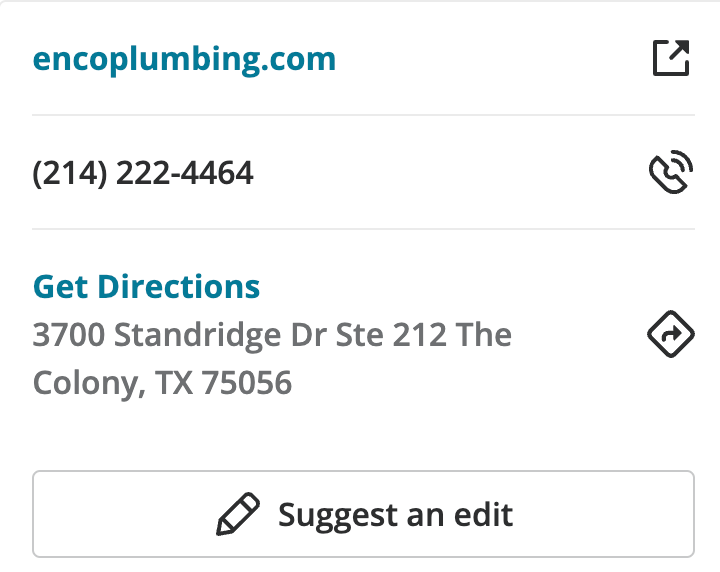
3) Large Language Model Optimization (LLMO)
Large language model optimization, or LLMO, is the marketing strategy of optimizing your content for large language models like GPT, which powers OpenAI’s ChatGPT platform.
Google’s recent adoption of AI Overviews using their Google Gemini LLM has expedited the need for functional LLMO practices for plumbing companies.
When users ask Google or ChatGPT about local plumbers, the answers are generated based on training data and displayed in a conversational form, often linking to sources like websites.
Plumbing companies can influence this training data through standard SEO and digital branded signaling, and emphasizing E-E-A-T principles more.
LLMs prefer to use trustworthy web sources for their training data, so part of LLMO is ensuring that your website demonstrates trust.
ChatGPT
More homeowners are asking ChatGPT about local plumbers, and the responses are impacting consumer behavior.
Digital marketing strategies, such as publishing unique, branded content that matches user intent, can increase your presence on ChatGPT.
While ChatGPT’s search market share remains low compared to Google, the gap will likely close quickly.
Google Gemini
Google Gemini is getting integrated into every aspect of Google search, which means plumbing companies must optimize for it to maximize their marketing ROI.
Many of the same principles used to trigger responses from other LLMs (such as GPT) can also be applied to Gemini.
Earning legitimate brand mentions from other reputable sites can help Gemini trust your company more, resulting in more frequent mentions.
Google AI Overviews
Appearing within Google’s AI Overviews goes beyond traditional SEO and expands into something called relevance engineering.
To put it simply, your website can appear within AIOs for primary terms if it ranks well for related terms.
As a plumbing company, you increase your AI Overviews impressions by covering all your plumbing services with high-quality content and brand signals.
Projected Marketing ROI: 500% – 3,500%

4) Reputation Management
Building a reputation is part of your business promotion, which means reviews and public feedback are crucial to plumbing marketing success.
The first step in gaining notoriety is to install DataPins software from Plumbing Webmasters. This software makes leaving reviews more convenient for customers.
They can visit your website and directly submit feedback to Google or Facebook without ever having to leave your site.
Additionally, the software sends text reminders with links so customers don’t forget to do it at home.
To maintain a positive reputation, try to do a great job on services and monitor review platforms for negativity. If you notice negative reviews, respond professionally and request their removal if they are unfounded.
Projected Marketing ROI: 100% – 500%
Google Reviews
Google Reviews are the most influential because of their direct impact on Google Maps rankings.
Also, when users search for your company name on Google, they will first see your Google Business Profile, which features your reviews and aggregate review rating.
Yelp Reviews
Yelp Reviews are the second most likely to be consumed by Google users, as Yelp’s listings often show up high in search results for branded search terms.
Aside from its prominence within search results, Yelp has a longstanding reputation that allows consumers to trust the validity of user feedback.
Review Showcase
Your plumbing company may have positive testimonials across multiple platforms, but they won’t reach your prospects unless you showcase them in a consolidated place, such as your website.
Plumbing companies should integrate HTML review widget sliders into their website designs. These sliders pull reviews from various sources using an API.
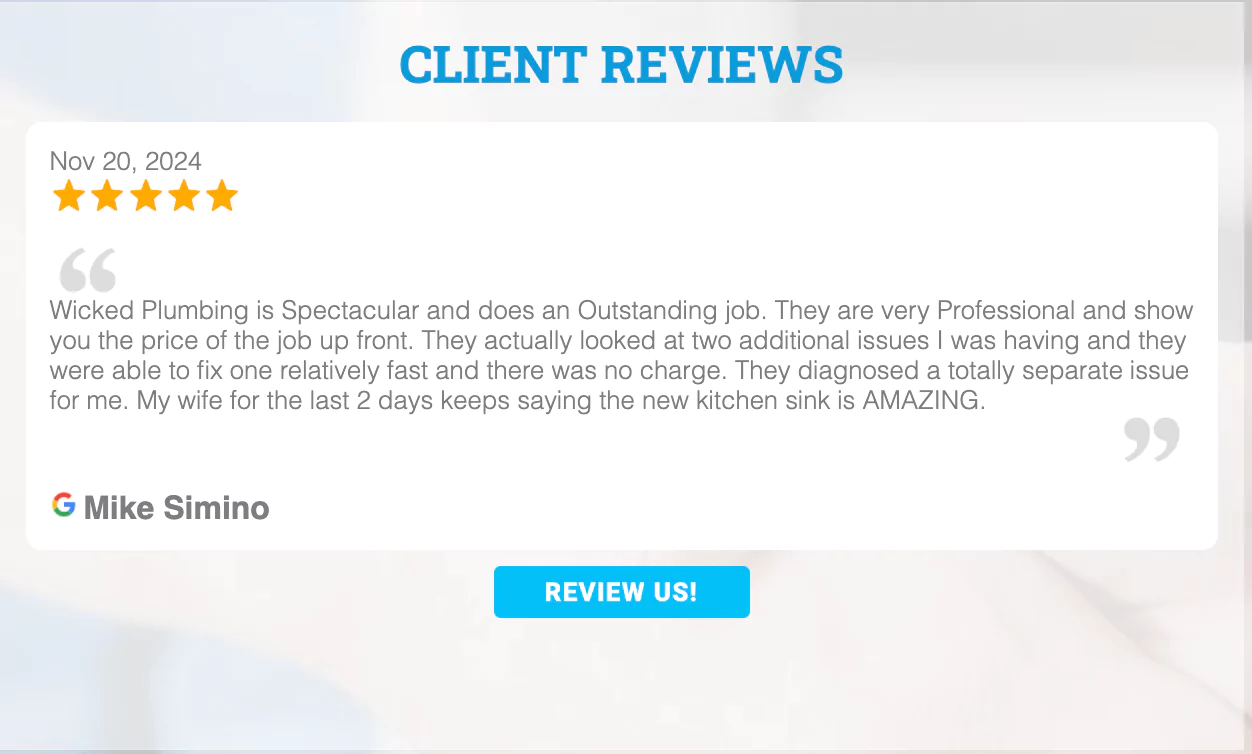
5) E-E-A-T / Social Proof
The thread that ties SEO and reputation together is E-E-A-T or social proof. E-E-A-T is Google’s acronym for experience, expertise, authoritativeness, and trustworthiness.
Search quality graders use the E-E-A-T concept to determine whether Google’s algorithms properly assess websites.
Some plumbers may struggle to turn E-E-A-T into tangible website changes, which is why thinking of it as social proof can be helpful for taking action.
For example, showcase recent plumbing jobs, award badges, license numbers, and reviews on your website to demonstrate each letter of E-E-A-T.
This “social proof” helps search engines determine the credibility of your plumbing brand while encouraging users to engage with your website.
Projected Marketing ROI: 300% – 1000%
Experience and Expertise
Plumbing websites can highlight experience and expertise by sharing recent job photos through a tool like DataPins.
The website can also feature an elaborate “About Us” page outlining the company’s years in business and affiliation with plumbing organizations and local institutions.
Authoritativeness
Building plumbing website authority starts with differentiating yourself from competitors, whether with an expansive service offering or an innovative website presentation.
Most importantly, authority is built through endorsements from other credible entities, which can emerge through backlinks, brand mentions, or social media coverage.
Trustworthiness
Displaying award badges and license numbers directly on your website helps build trust with consumers and visitors.
You should also feature the reviews slider (which we mentioned earlier) to reinforce trust from trusted 3rd party platforms like Google and Yelp.
6) Content Marketing
Content marketing leverages content in all its forms to promote your plumbing business. Google, Facebook, YouTube, and so on would not exist without content.
Plumbers can create and market content assets through these channels, helping build a digital brand and sending signals to major search engines.
An example of content marketing is showcasing a recent plumbing job on your website and describing the materials used.
Sharing or repurposing this content on other platforms, such as Facebook, TikTok, and YouTube, casts a wider promotional net for potential plumbing customers.
These combined signals help strengthen your brand authority, leading to consistently higher search engine rankings.
Projected Marketing ROI: 100% – 300%
Web Content
Blog posts or articles were once considered the preferred medium for website content marketing, but that is no longer true.
Today, effective content marketing is showcasing recent jobs and job descriptions rather than writing boring blog posts that nobody reads.
Email Content
Email marketing copy is a form of content marketing that can make or break your email campaigns.
Email content should be concise and engaging, highlighting an urgent call to action that increases conversions and inspires action.
Social Media Content
Sharing content through social media networks like Facebook, Instagram, and YouTube is the fastest-growing form of content marketing.
In the social media context, short-form videos, often called shorts or reels, are the most widely consumed by potential customers.
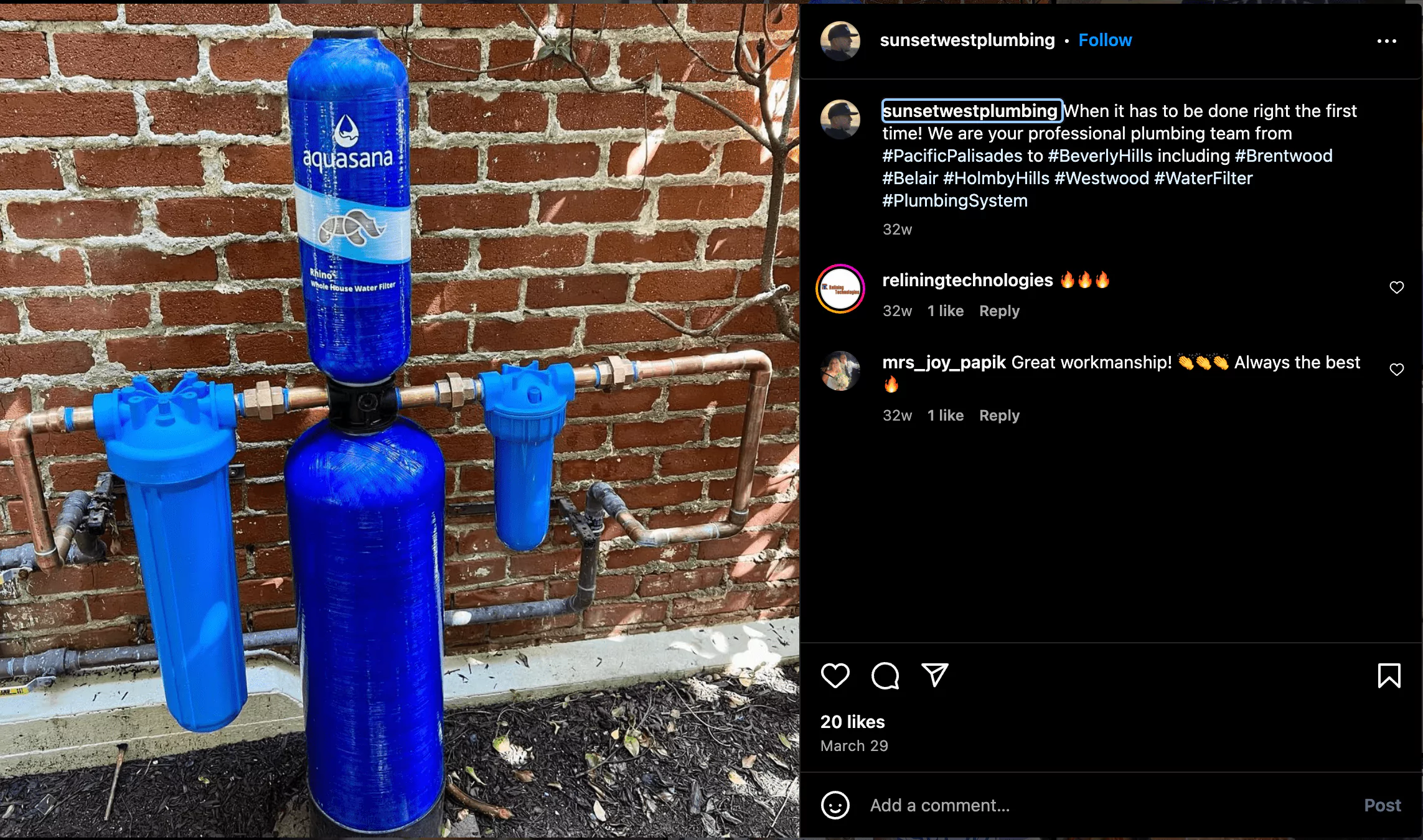
7) Google Ads (PPC)
When organic marketing methods are slow to produce tangible results, investing in paid ads through Google allows plumbers to skip the line.
PPC or pay-per-click Google Ads empower plumbing companies to appear at the top of Google search results for specific keywords like plumber, plumbing, and plumbing company.
The costs of these clicks can add up quickly, making optimizing your ad’s landing page for conversions essential.
PPC ads are not a viable long-term marketing strategy for plumbing companies, but they can supplement other digital marketing efforts as they culminate in consistent lead generation.
Leads generated through Google Ads usually have a lower conversion rate than organic clicks, but the customers you service through ad conversions can help you build your brand.
Projected Marketing ROI: 10% – 100%
Search Ads
Google Search Ads emulate organic results but appear above them on the SERPs, requiring the advertiser to pay each time a user clicks on the advertisement.
Search Ads are appealing for plumbing companies who’ve yet to secure top organic positions on Google results, though the quality of the plumbing leads is lower than with their organic counterparts.
Display Ads
Display Ads appear across Google’s network of websites and apps, including YouTube and Gmail, and differ from Search Ads.
Google Display Ads are usually video or image ads that aim to capture users’ attention as they browse other websites and apps.
Local Service Ads
Local Service Ads (LSA) is Google’s pay-per-lead network for local businesses like plumbing companies.
LSA ads integrate your company’s Google Business Profile and reviews to show ads at the top of search results for local and service-related queries.
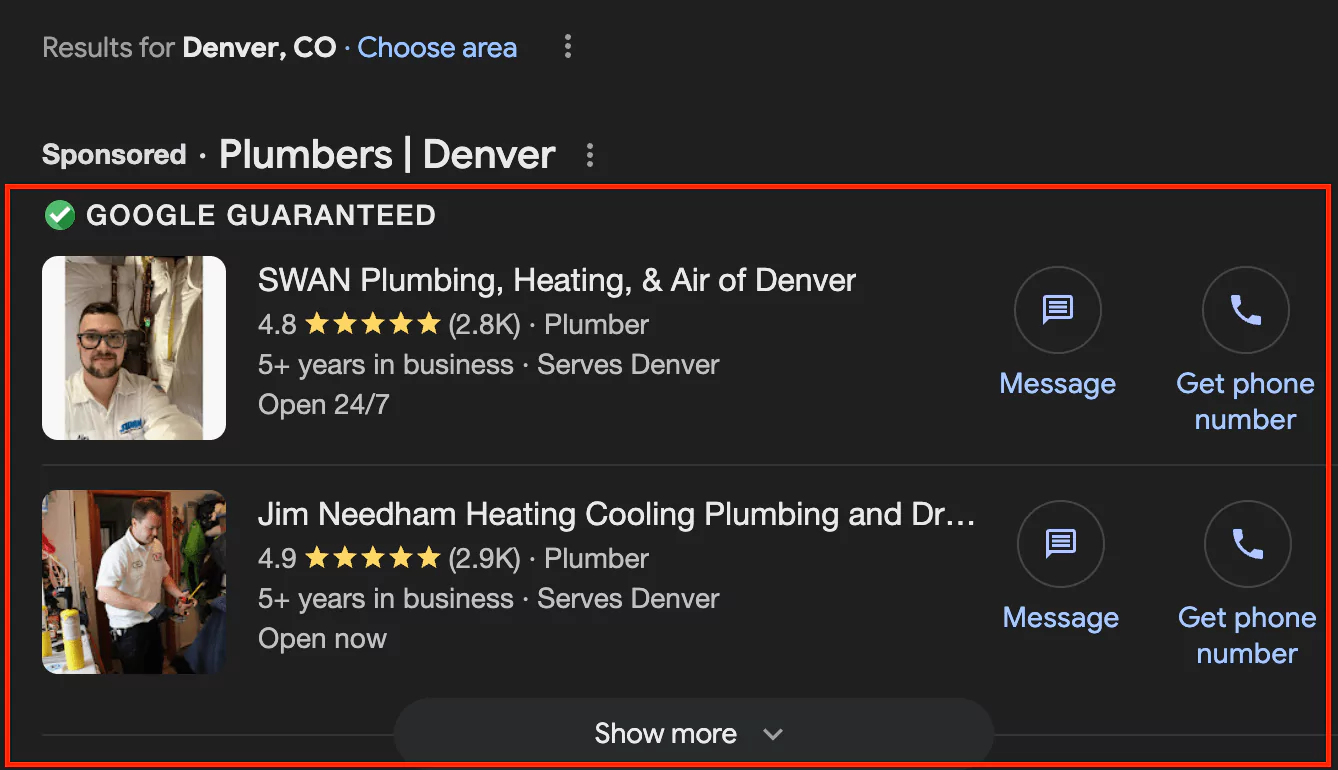
8) Social Media Advertising
Most of your target customers spend their free time scrolling through social media apps like Facebook, Instagram, and TikTok.
While reaching homeowners organically through social media is challenging, paid social media ads can quickly reach your target audience.
On the Meta ads platform, you can target Facebook and Instagram users, using Advantage+ AI targeting to reach your desired users.
You can invest in various ad types, including lead ads, which capture the user’s information directly on the app.
Facebook and Instagram are video-friendly mediums, making a well-crafted video ad especially appealing to social media users.
Projected Marketing ROI: 200% – 800%
Facebook Ads
Facebook offers various ad types that appeal to local plumbers, including image, video, messenger, story, and lead ads.
Facebook lead ads capture the user’s contact information directly from their profile, reducing the friction often associated with manually filling out forms.
Instagram Ads
Instagram is part of the Meta ad platform, the same one that handles your Facebook advertisements. This means you can expand these ad campaigns to Instagram.
Like Facebook, plumbers can utilize short videos for placement on various parts of the Instagram social media platform.
YouTube Ads
YouTube offers various ad positions, such as skippable and non-skippable, in-stream ads that appear while users are consuming a video on the platform.
Other ad types include bumper, masthead, and overlay ads, which are more subtle but less disruptive to the user.
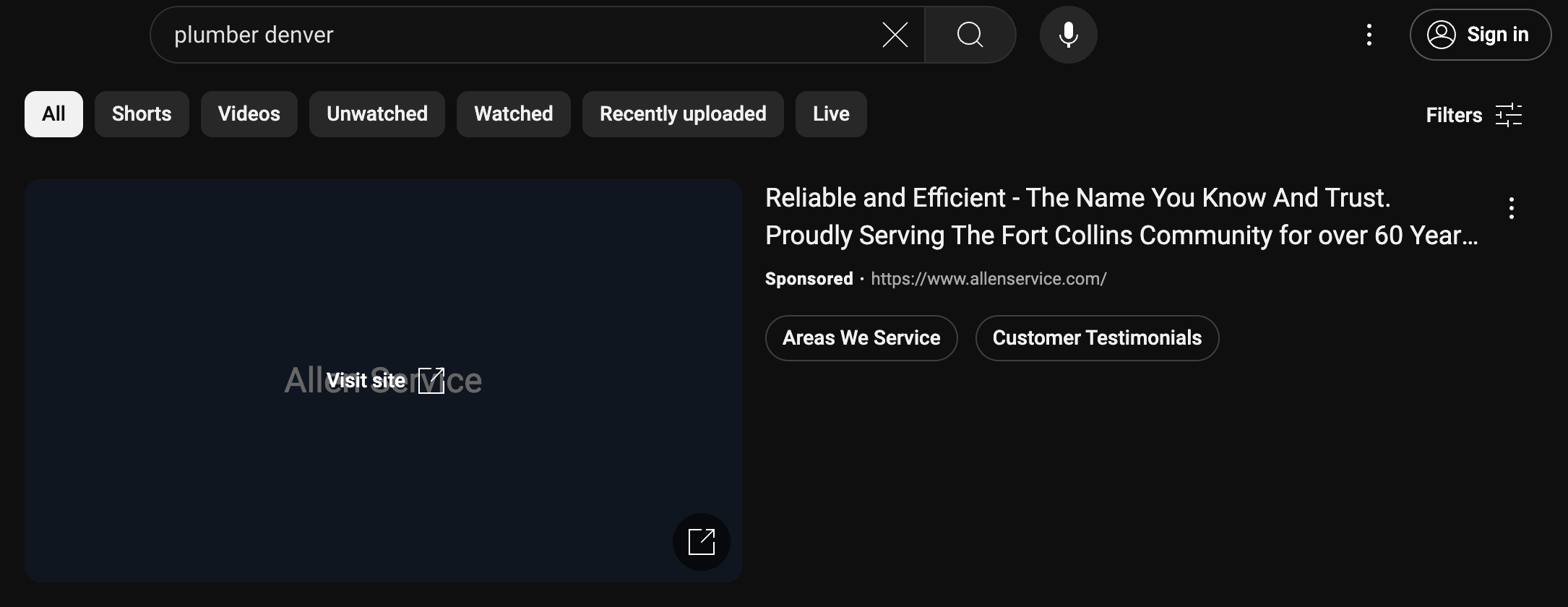
9) Social Media Marketing
Ads are not the only way to promote your company on social networks. Organic posts on Instagram, LinkedIn, and YouTube remain meaningful assets for plumbers.
While they may not directly generate leads, they can help grow brand awareness and influence local SEO by sending signals to Google.
Even if it only acts as a business listing, a presence on social media boosts authority. It lets Google and its users know that you are a legitimate business and have taken the time to connect with your potential customers through social media.
Content sharing helps distribute on-page content to external sources and generates valuable brand signals that contribute to SEO authority.
Facebook is a worthy platform for distributing high-quality plumbing content from your website. Of course, your reach will be limited unless you invest in Facebook Advertising.
Projected Marketing ROI: 0% – 100%
Facebook Marketing
Organic Facebook marketing is more challenging than advertising since organic posts reach only an average of 5.2% of the page’s followers.
As a result, Facebook marketing is more about a broader marketing and advertising strategy than it is about directly pulling leads.
Instagram Marketing
Engagement on organic Instagram business posts is even lower than on Facebook, which is noteworthy when considering investments.
However, like Facebook, organic posts hold a value that expands beyond capturing leads directly from those users.
YouTube Marketing
It’s much easier for plumbers to reach users organically on YouTube as their platform is less geared toward ads and more toward the suggestion-based algorithm, which aims to keep users watching similar videos for long periods.
The other advantage of YouTube marketing is its direct affiliation with Google, which prompts many Google SERPs to rank YouTube videos directly in the results.

10) Email Marketing
The projected marketing ROI for email marketing is quite high across all industries, including e-commerce and product-related businesses.
However, plumbing email marketing has a lower ceiling than product-based campaigns since it sells services to targeted homeowners in a defined service area.
While plumbers should not expect the eye-popping ROIs showcased in some “email marketing statistics” articles, it can be a practical part of your broader marketing strategy.
The success of email marketing campaigns is tied to customization and personalization, which tools like AWeber and Mailchimp can assist with.
You can target subscribers with the best offers at the best times by categorizing them into various lists.
Projected Marketing ROI: 100% – 4,000%
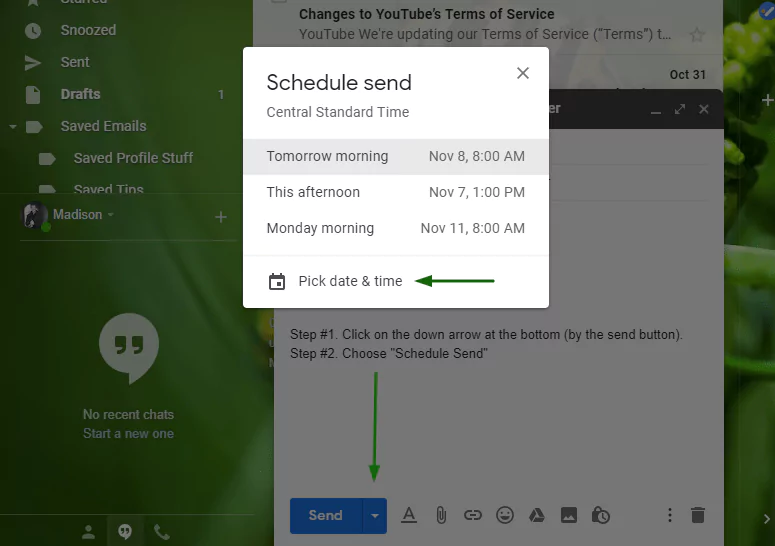
11) Remarketing / Retargeting
Remarketing is the process of advertising services to someone who has previously engaged with your business, typically through a website visit.
Advertisements can retarget these users on social media platforms like Facebook and Instagram using pixel tracking.
Retargeted ads convert much faster than their standard counterparts because the users are already in your sales funnel.
As a result, plumbing companies often save marketing resources by strategically remarketing to website visitors.
Projected Marketing ROI: 1,000% – 4,000%
12) AI-Assisted Marketing
Integrating AI into your marketing processes can increase efficiency and save resources.
Plumbers can use AI with their CRMs, marketing tasks, and even content ideation – though it should be used carefully.
Plumbing contractors can even utilize AI with funnels and marketing automation, such as texting a new lead or booking an appointment on a custom calendar.
These AI-powered automations help plumbers reduce unnecessary tasks and focus more on scaling their business and performing services.
Various marketing tools are now incorporating AI into their feature lists, including DataPins, which helps plumbing companies showcase recent jobs on their websites for SEO signaling.
Projected Marketing ROI: 100% – 4,500%
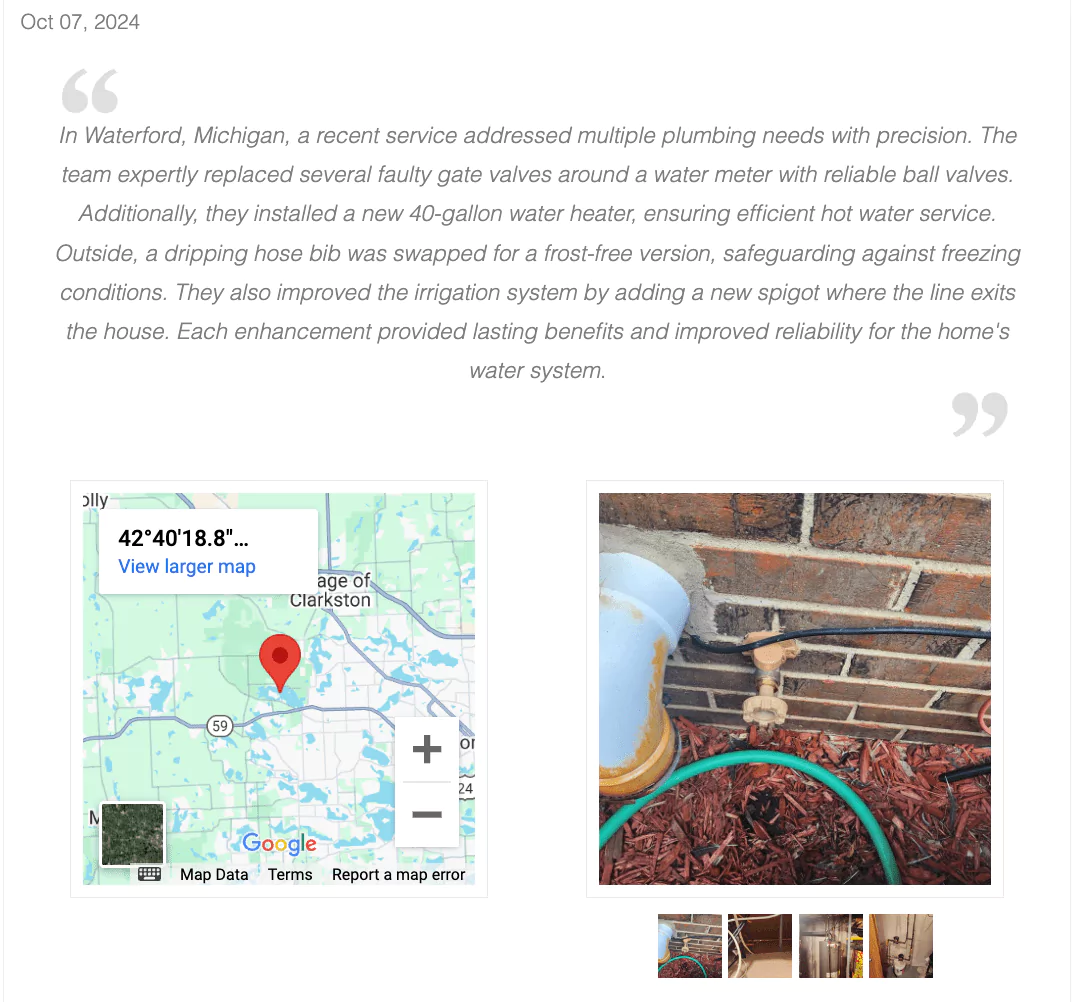
13) Billboard Advertising
Billboard advertising is an old-school promotional tactic that is still valuable in some markets.
As Google’s emphasis on branding grows more significant, the impact of billboards on search rankings has increased in recent years.
When freeway drivers pass a plumbing company billboard on their daily commute, the brand name may stick in their minds and prompt “branded searches” on Google.
The more branded searches that occur on Google, the stronger your digital brand becomes, leading to higher search results and more consistent lead generation.
While billboard conversions are traditionally difficult to track, their digital impact creates a greater allure for modern plumbers.
Projected Marketing ROI: 25% – 500%
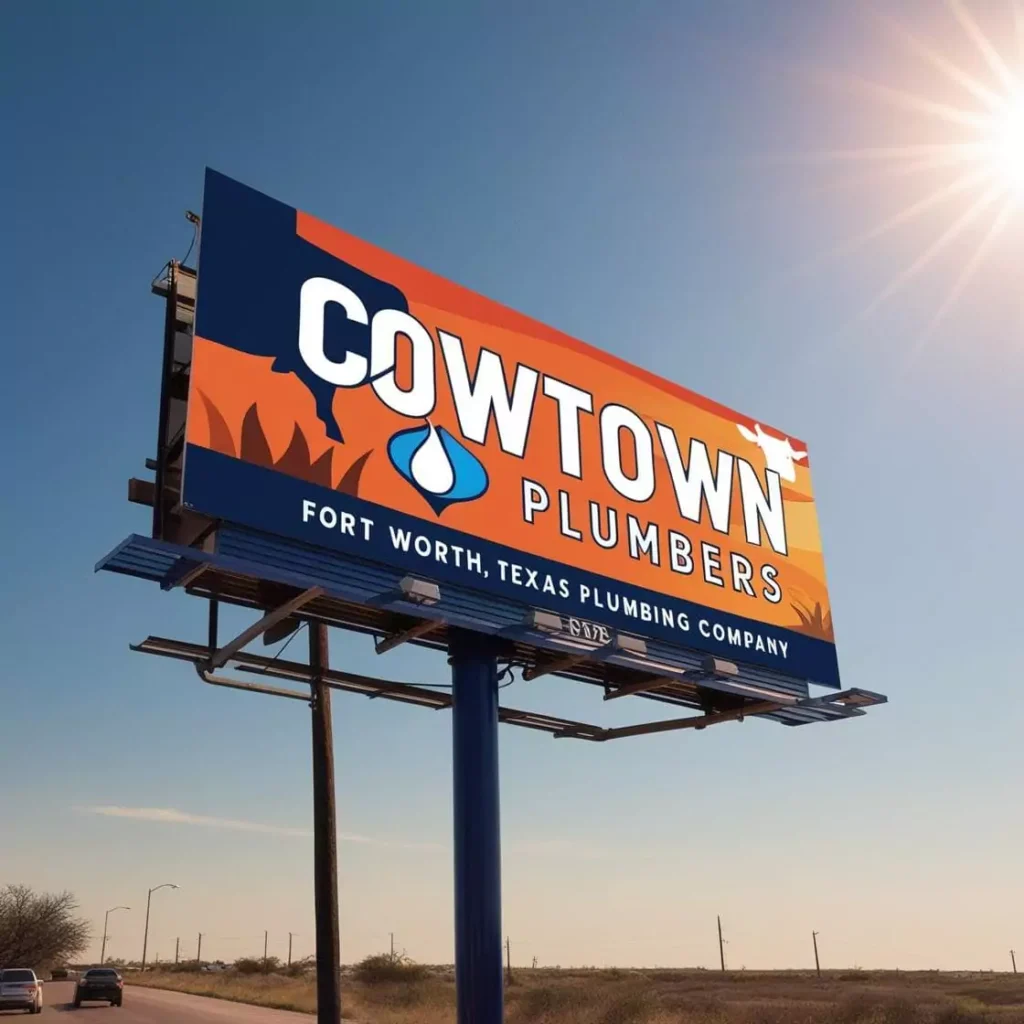
14) Business Cards
Although business cards are an old-school marketing tactic, they remain a worthwhile investment for plumbers, if only because they are so cheap.
Investing in these paper-thin promotional materials is such a minuscule expense that any benefit would make them “worth it.” There’s also a degree of personalization that business cards can extend.
After completing a plumbing service for a paying customer, leaving them with a card that lists your contact information and reminds them to review your service on Google or Facebook can increase callbacks, customer retention, and reviews.
So, while business cards are unlikely to “bring in” customers, they can help retain and maximize the number of customers compiled through other marketing methods, such as search engine optimization (SEO).
Homeowners over 50 are exceptionally responsive to business cards as they are less reliant on the digital-based behaviors of younger consumers.
Projected Marketing ROI: 0% – 200%
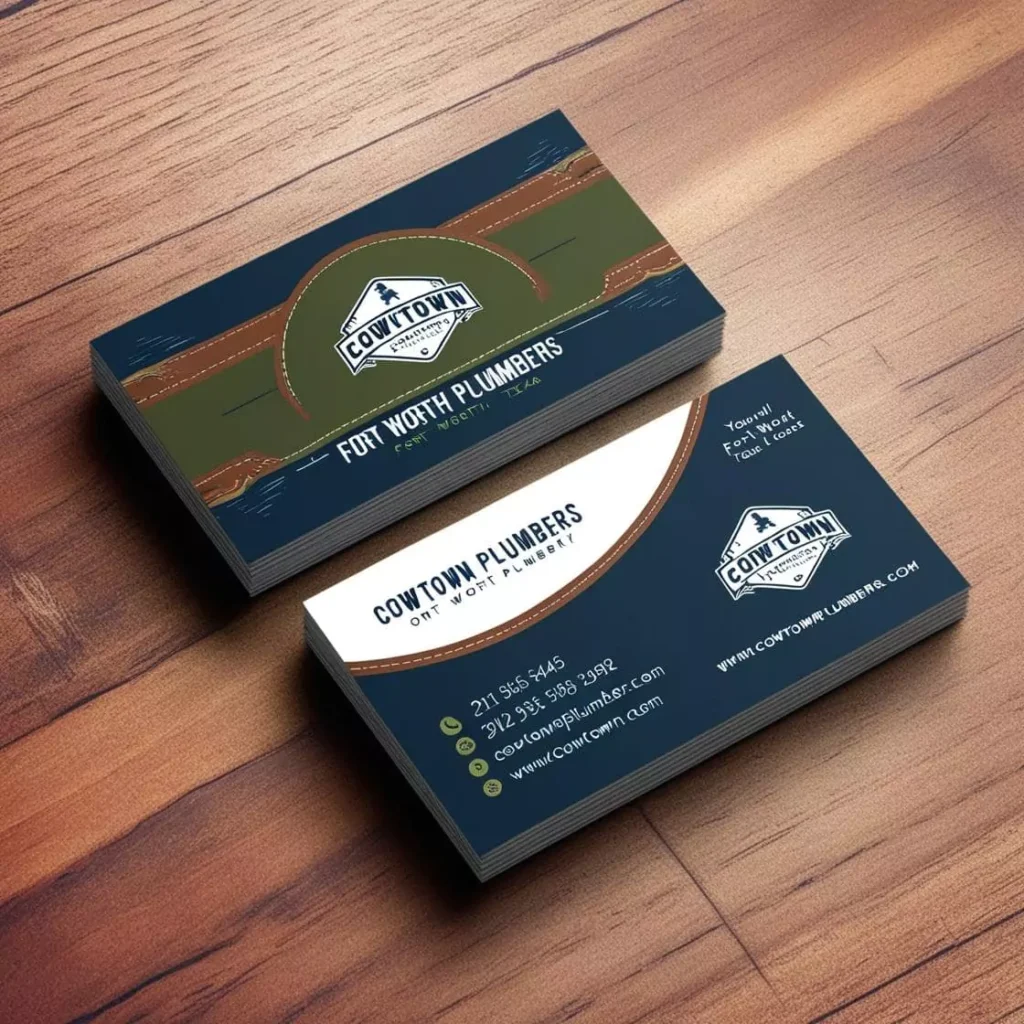
15) Print Advertising
Print advertising alludes to newspapers, magazines, and other tangible marketing materials.
Most publications have transitioned to digital form, although the value of print ads for plumbers has not entirely dissipated.
Studies show that print ads produce 37% higher brand recall than digital advertisements, making them more memorable.
Aside from flyers and brochures used in direct mail campaigns, event programs are an often overlooked print advertising alternative.
By including your company’s ad within an event program, you can reach the event’s guests in a memorable way.
Projected Marketing ROI: 0% – 150%
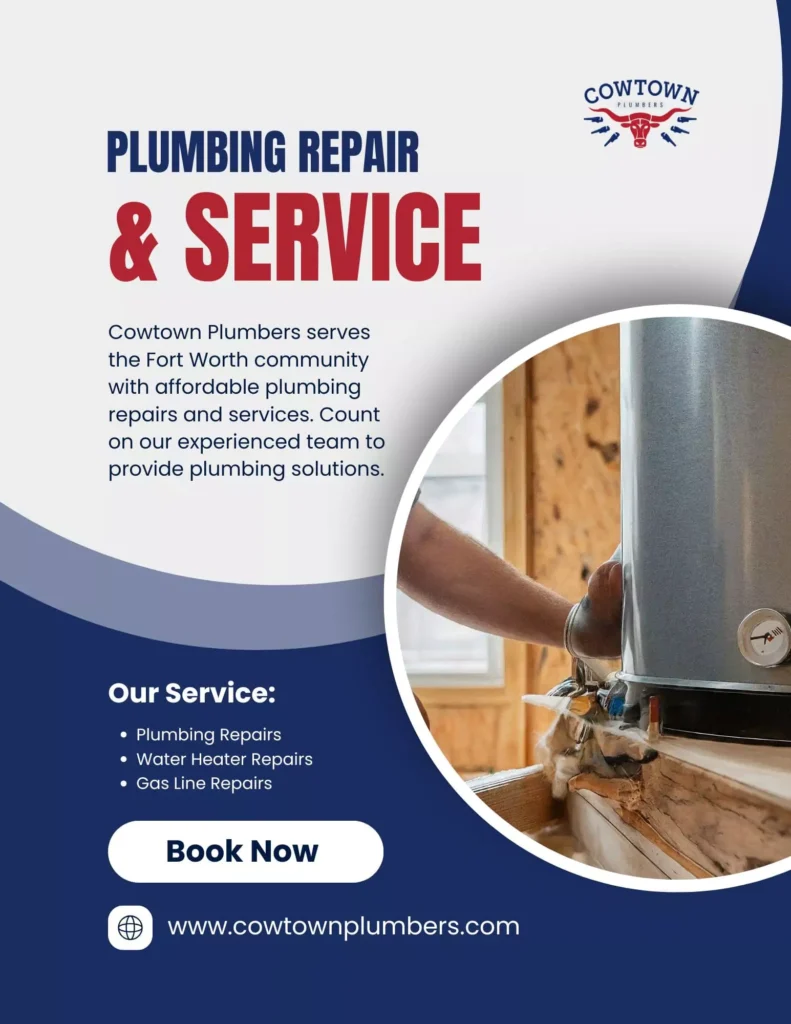
16) Telemarketing (Cold Calling)
Cold calls have always had a negative connotation, but you may be surprised at their effectiveness.
While most people will shut you down immediately, you have the opportunity for personal interaction for sales and feedback collection.
Telemarketing often generates insights you can use in other marketing endeavors, including digital advertising and website messaging.
Rest assured that established plumbing companies do not need to cold call because their brand consistently generates inquiries through various inbound sources.
Nevertheless, startups may dabble in the telemarketing game to get a feel for sales.
Projected Marketing ROI: 0% – 100%
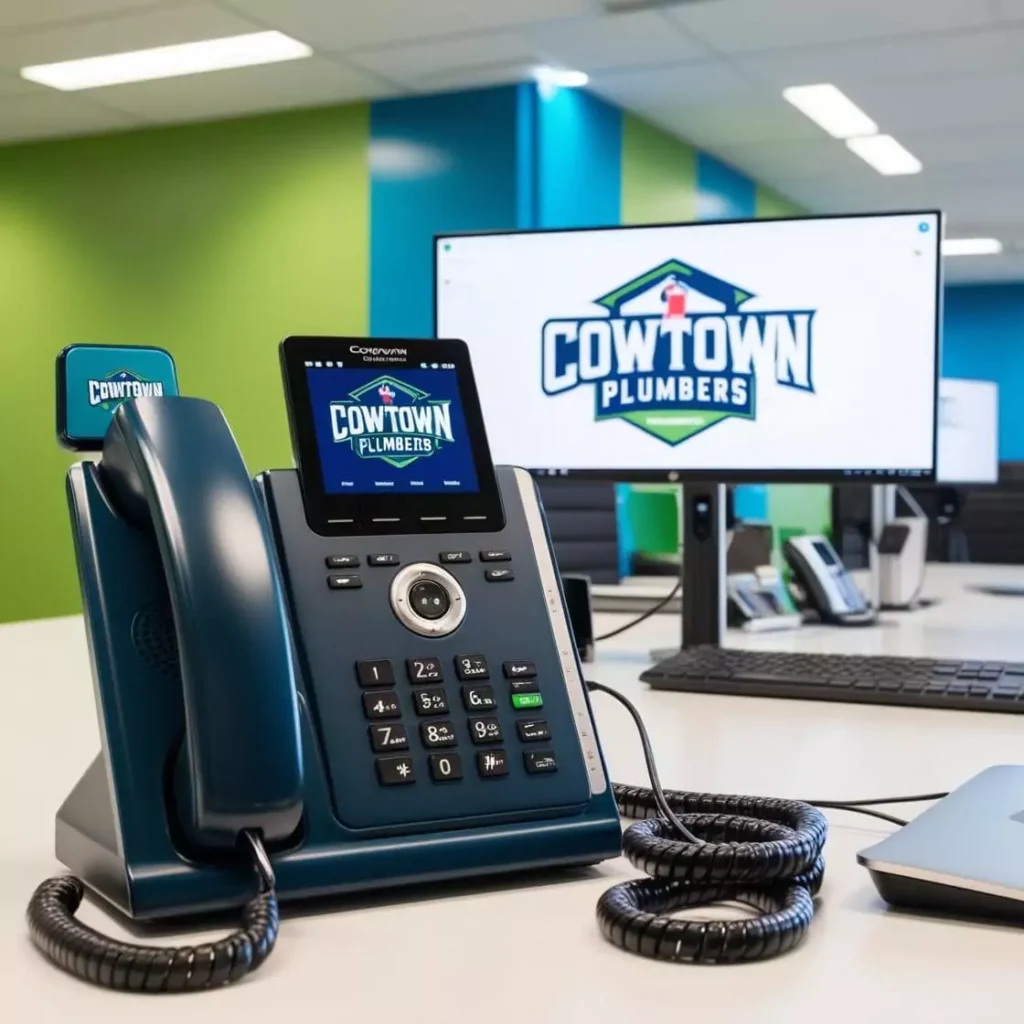
17) Television Spots
Like billboards, TV ads are more effective at generating brand recall for businesses than online advertising.
While the concept of “watching TV’ has evolved significantly over the past decade, people still watch television in one form or another.
Much TV consumption today occurs through streaming services, many of which have non-skippable ads during breaks.
Because plumbers can make a grand impression on TV watchers, investing in a TV spot can be a profitable marketing endeavor.
When utilizing more traditional marketing avenues, the goal is broader, which is to create a memorable plumbing company brand.
Projected Marketing ROI: 300% – 500%
18) Truck Wraps
Draping your truck in a size-fit and mobile promotional sticker remains one of the most effective ways to reach customers.
Truck wraps are essentially mobile billboards that promote your plumbing company wherever you drive (or park).
Because plumbers target customers within a defined service area, truck wraps are naturally effective at targeting a local audience.
Modern plumbing truck wraps often include the company’s website URL and a QR code, which prospects can scan on their phone to be taken directly to the homepage or landing page.
As an upfront investment, truck wraps usually pay long-term dividends.
Projected Marketing ROI: 100% – 500%

Transform Your Marketing with Plumbing Webmasters
My agency, Plumbing Webmasters, specializes in marketing for plumbers and offers a suite of digital services, including a proprietary software tool, DataPins.
The strategies outlined throughout this post showcase my experience working with local plumbing companies on marketing over the past decade-plus.
As I’ve worked with thousands of plumbing contractors to find the marketing sweet spot in their service area, I’ve learned the nuances that come with specific campaigns.
My vast marketing knowledge, based on more than a decade of first-hand experience, inspires me to share my insights with local plumbing companies that can benefit from these strategies.
I’ve found that brainstorming ideas around SEO, Local SEO, E-E-A-T, LLMO, and truck wraps is the most profitable combination of plumber marketing strategies.
To discuss my plumbing marketing philosophy, call my personal phone number at (877) 388-9884.



